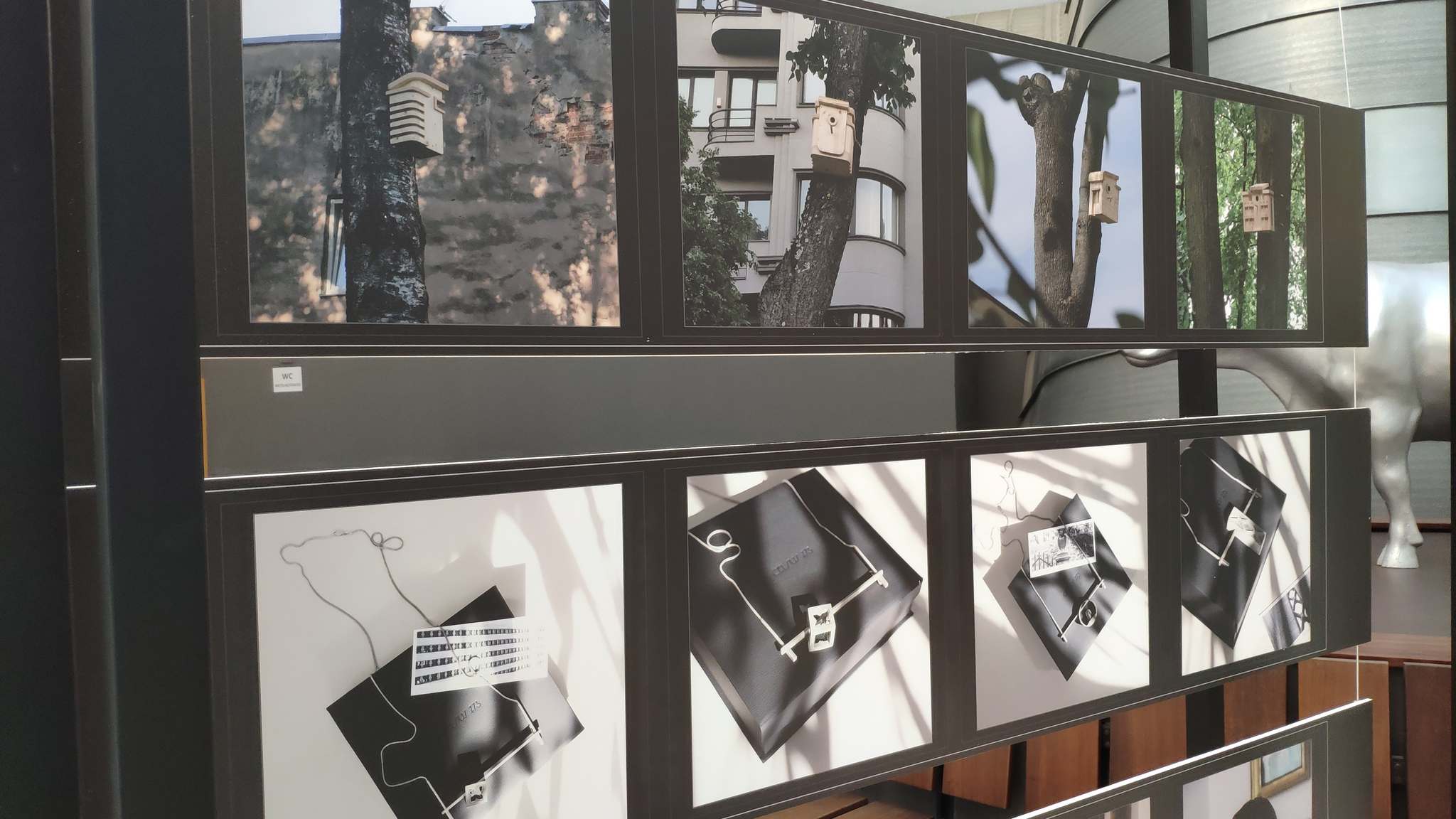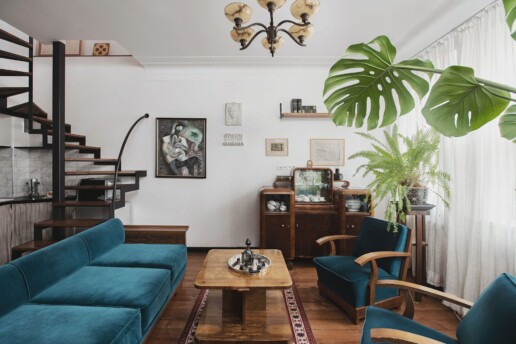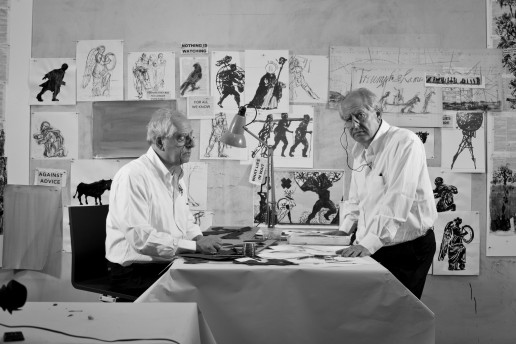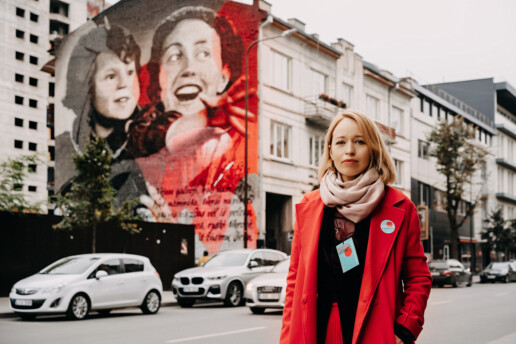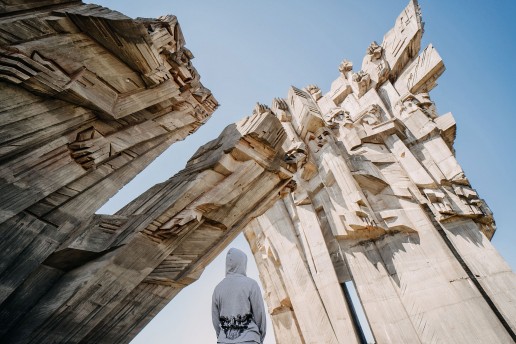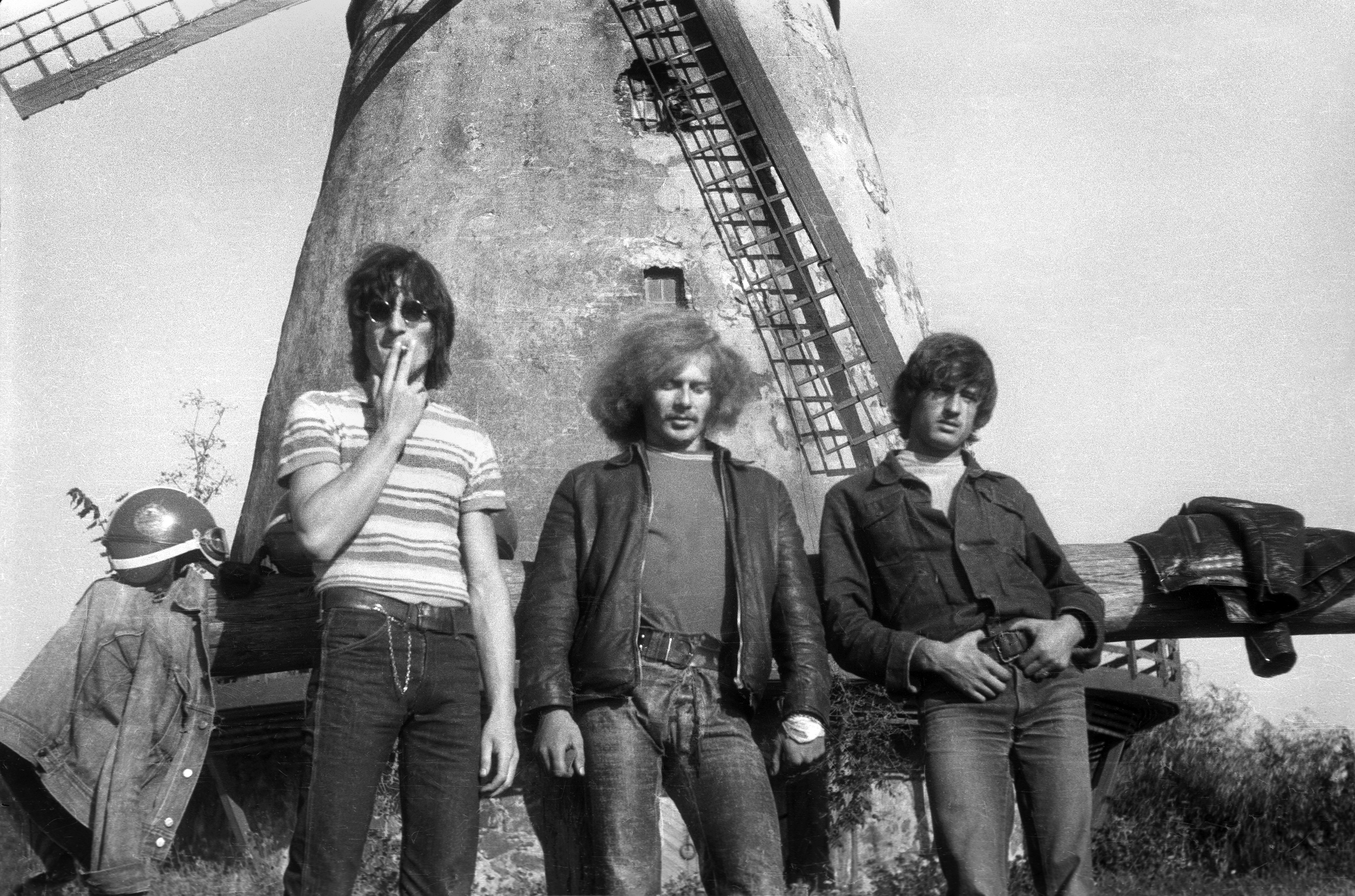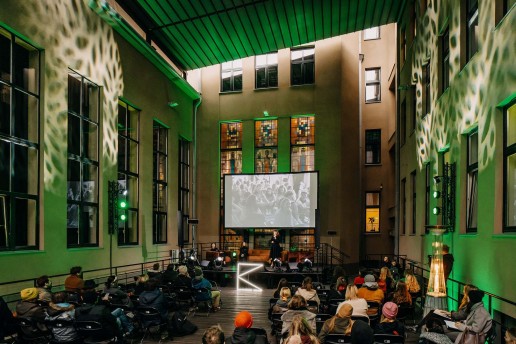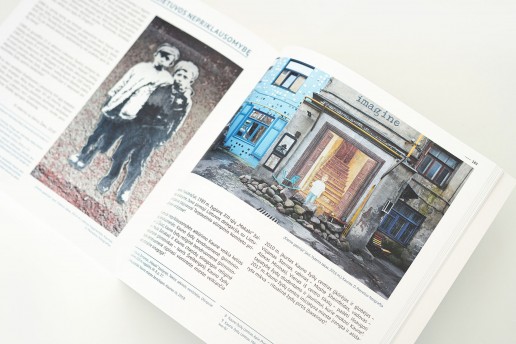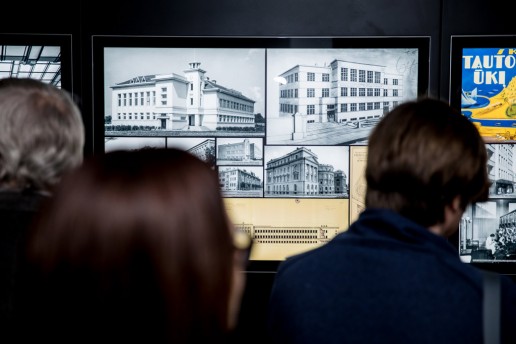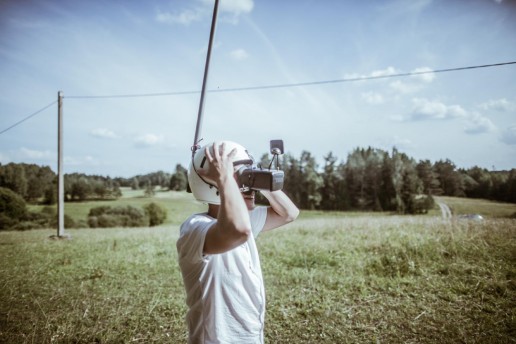Cultural Experiences in Your Bed and the Backseat: Experience the Hospitality Programme of Kaunas 2022
Have you ever experienced culture while sleeping in a historic bed? Or comfortably getting from point A to point B? These and other unique adventures in Kaunas have been created by the hospitality programme of Kaunas – European Capital of Culture 2022. “If you try at least one of them, you’ll never think that Kaunas is just Laisvės Alėja,” the representatives of the team behind “Experience Kaunas” smile.
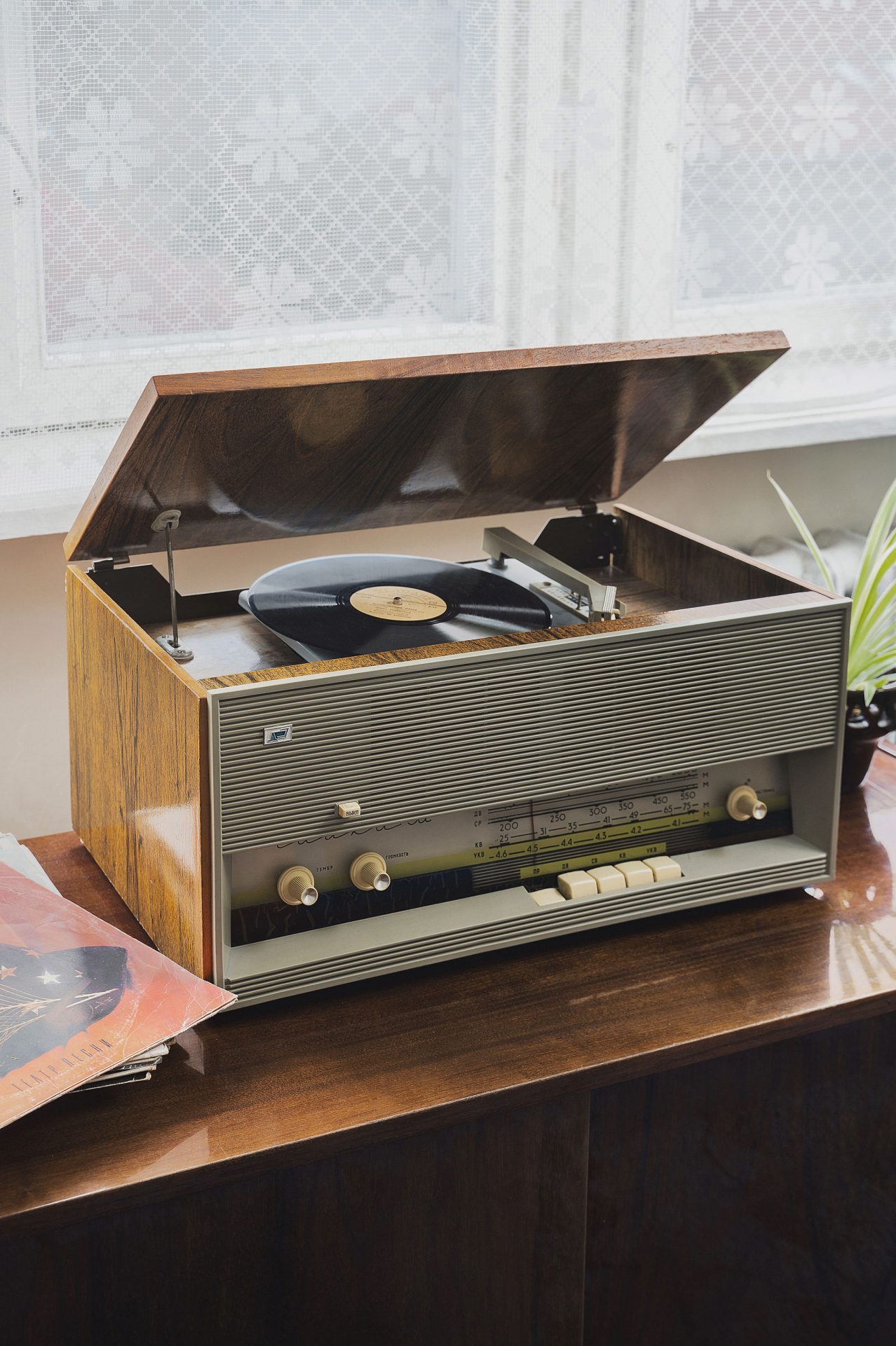
Bed & Culture
“Bed & Culture” is a chance to stay in an authentic Kaunas apartment. In 2022, you will be able to choose from a selection of places representing different eras of Kaunas – some of which will be open to guests for the first time!
An authentic radio playing old schlagers will take guests back to the optimistic interwar period in Kaunas, while ladies’ dresses reminding the style of the Provisional Capital will inspire you for an evening in the city, and perfumes in authentic art deco bottles will enhance the impression... And of course, there will also be books reflecting the era, and even board games – something that you wouldn’t find in the modern yet traditional hotels.
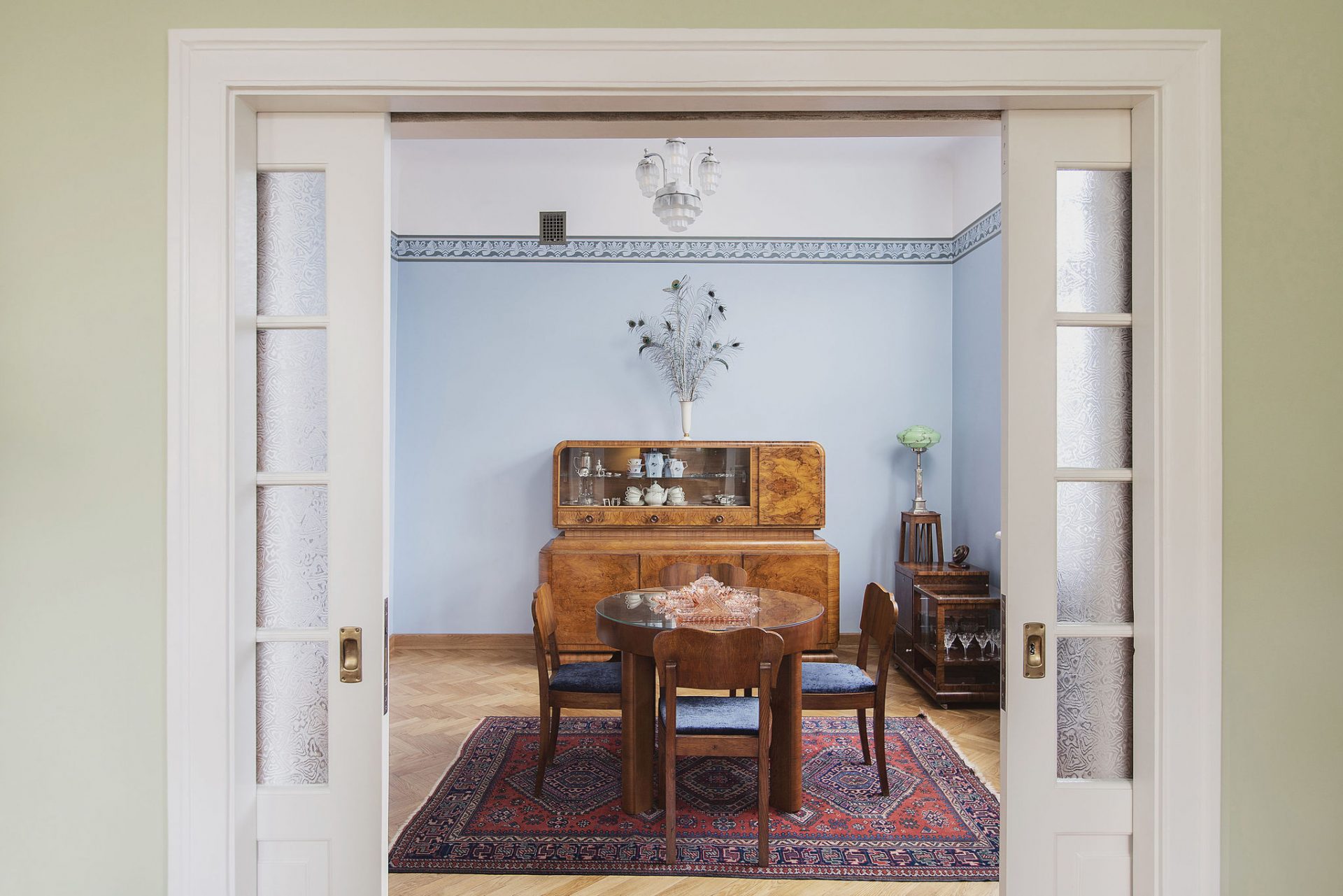
Who wouldn’t want to stay in an Italian-inspired villa of the interwar architect Stasys Kudokas on the slopes of Žaliakalnis, a carefully restored wooden villa in Panemunė, or a real Art Deco museum in the very centre of Kaunas? Meanwhile, those interested in the Cold War era and post-war design should consider a night or two at a 70s-style apartment. It is quite possible that the number of Culture Lodging offers, and the number of apartments or villas representing the eras, will increase as 2022 gets underway.
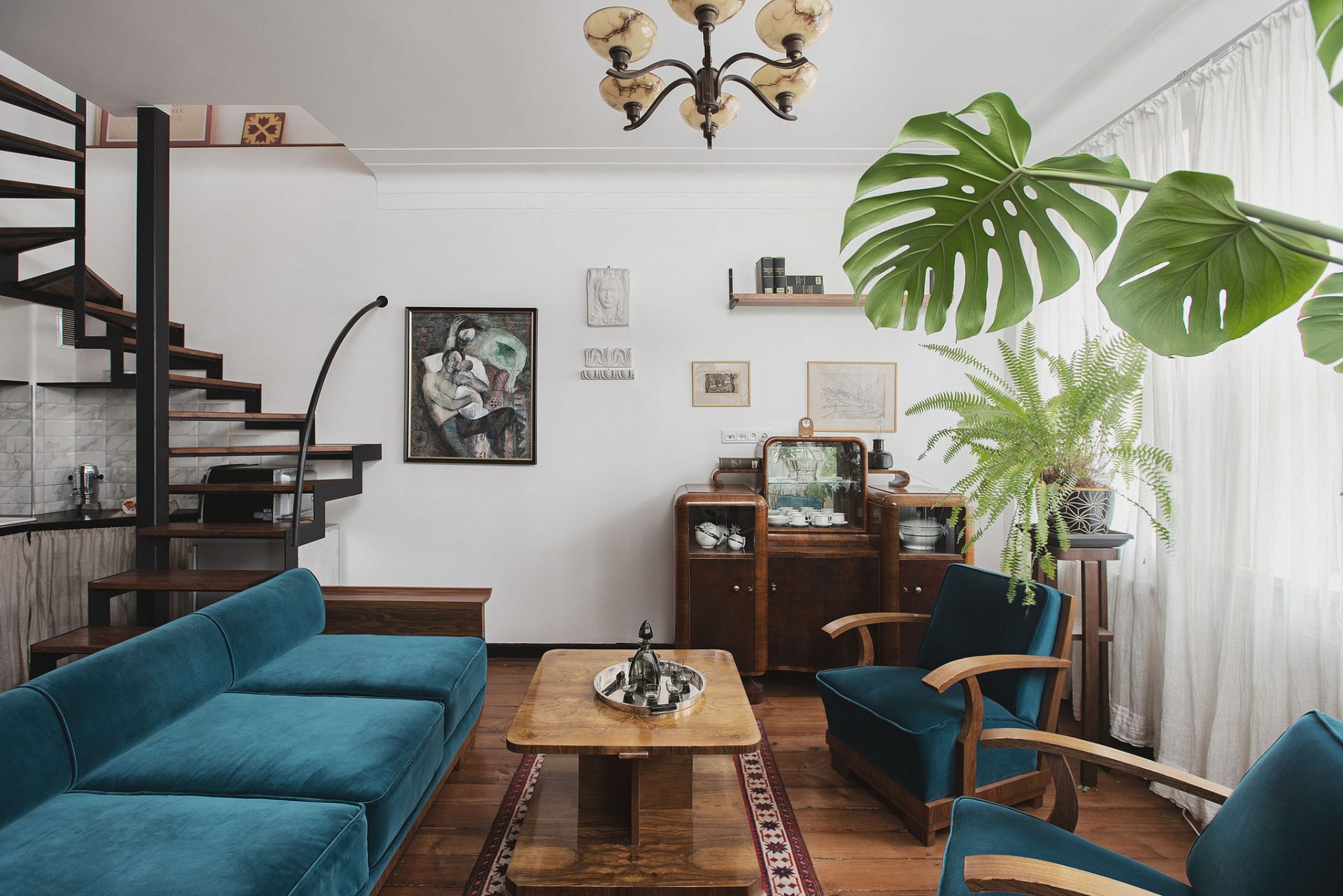
Culture Hosts
More and more travellers are moving beyond traditional tourist attractions and are looking for authentic experiences, personal stories and discovery of the city through the eyes of a local. If you’re shy about walking alone or talking to the first person you meet on the street, Cultural Concierges are here to help. They are Kaunas residents ready to show their hospitality, show you around their favourite places or special attractions that are not marked on the maps – and, of course, give you advice on the Kaunas 2022 programme. Live or in writing – free of charge.
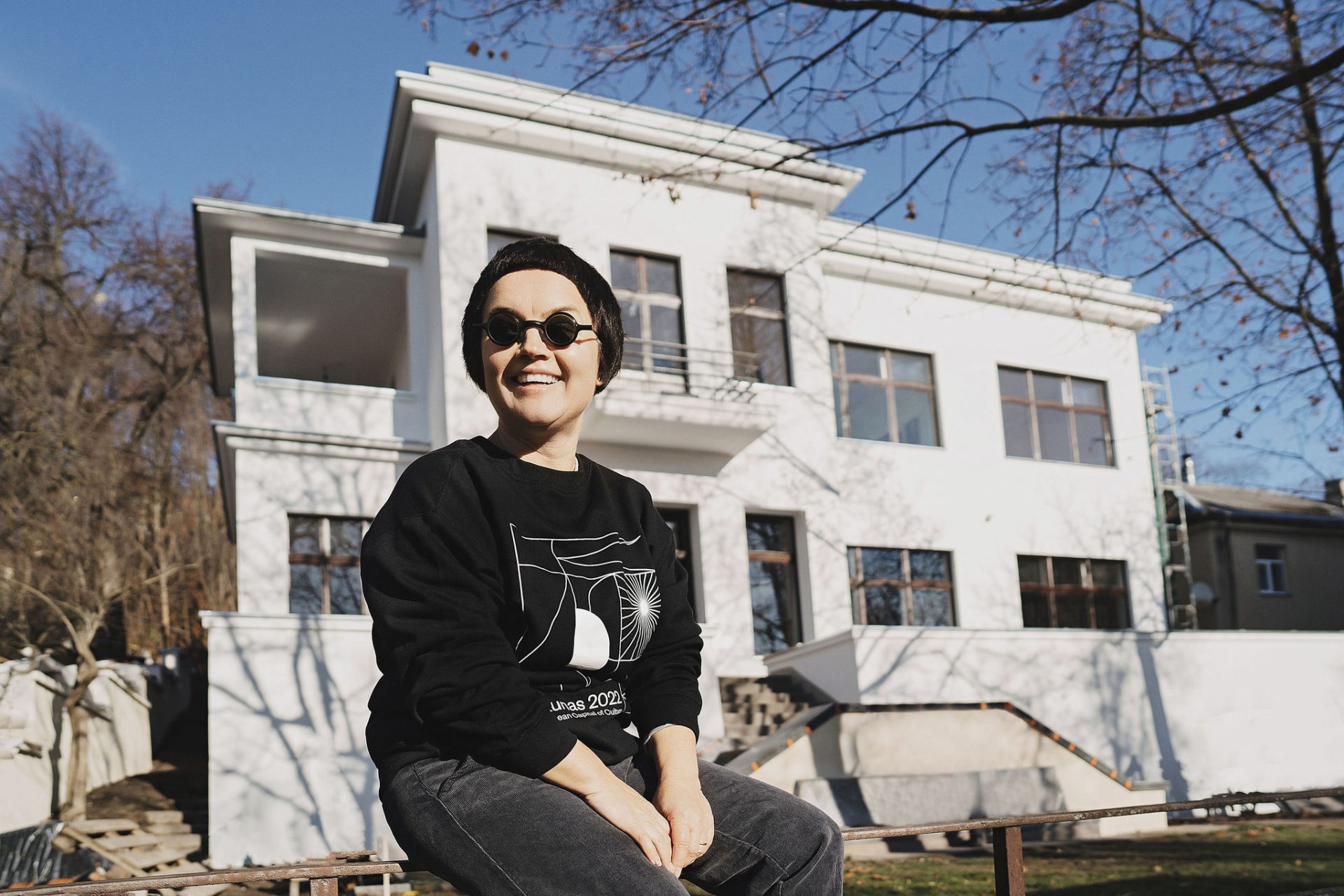
Culture Ride
Guests of Kaunas who have little time in the European Capital of Culture but a big appetite for new experiences will be able to call on... a cultural chauffeur. Simply put, it’s a private ride with an interesting personality with a very intimate knowledge of Kaunas.
Among the cultural chauffeurs who have already agreed to this adventure are artists, historians, photographers, cultural experts and even chefs. All of them are ready not to merely reveal the key highlights of Kaunas but also the places that are not mentioned in tourist guides.
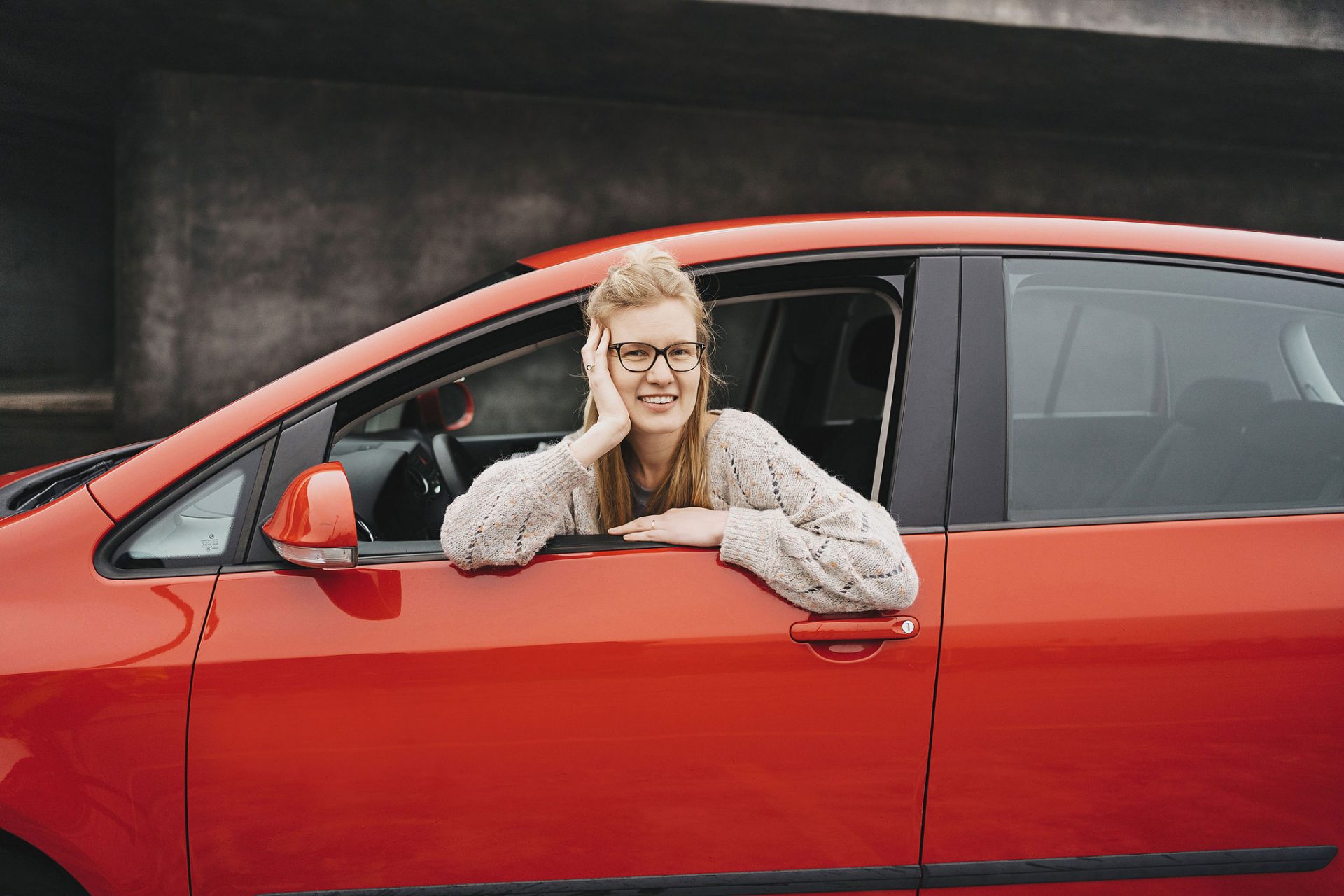
Book your experience in Kaunas here: https://kaunas2022.eu/patirk-kauna/
The creative hospitality ideas ready to be implemented in 2022, are designed to make the experience in the European Capital of Culture as convenient and interesting. It will be impossible to avoid culture in Kaunas and Kaunas district this year, with more than 40 festivals, over 60 exhibitions, more than 250 performing arts events, including more than 50 premieres, and more than 250 concerts included in the Kaunas 2022 programme. The full agenda of Kaunas 2022 is here.
The Programme of the Kaunas 2022 Grand Opening Revealed (Over 100 events During the Weekend)
Unusual installation work near Kaunas Žalgirio Arena reveals that five years of preparation are coming to a climax. On 22 January 2022, Kaunas will officially become the European Capital of Culture. The year’s programme, rich in events, happenings and experiences, will kick off with “Confusion”, a unique show of music, light, video and dance.
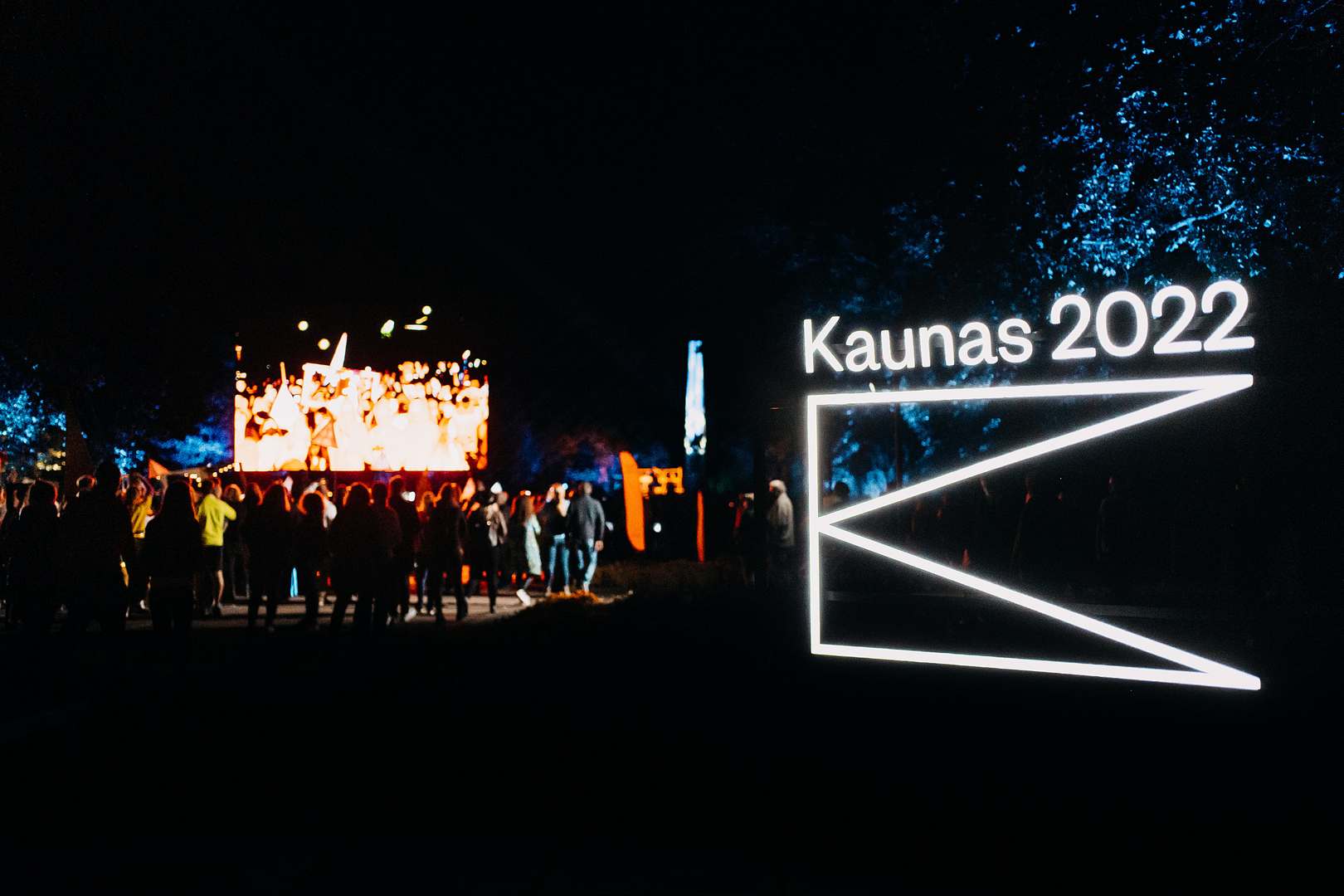
Everyone to Become a Part of the Massive Show
“Confusion” is the first act of the Contemporary Kaunas Myth Trilogy. Also scheduled for May and November, the trilogy is an allegory of the rise of the city as a living being. The pre-opening events in Kaunas district towns and city microdistricts will start already on 19 January.
On Saturday, 22 January, the “Confusion” will kick off at 7:30 pm sharp. The show will transform Žalgirio Arena, the largest in the Baltics, into a giant stage-screen, which will be clearly visible from many places, so the event can become a mass celebration for Kaunasians and their guests.
“The opening show has a positive message at its core; that we face the struggles of life through the cultures we share and the stories we tell one another! So, although this show is a story of Kaunas, it is also a story for Lithuania and Europe. It contains the voices of Kaunas, the buildings of Kaunas and the stories of Kaunas past and present – but they are stories we can all relate to”, says Chris Baldwin, the director of “Confusion” and the other major events in 2022.

Several hundred professionals from the arts, culture and other fields are working alongside director Chris Baldwin to prepare and produce Uprising. Among them are French visual artist Olivier Grossetête, renowned for his exceptional performances, Kaunas-based composer Antanas Jasenka, fashion designer Sandra Straukaitė, costume designers Aleksandra Jacovskytė and Julija Skuratova, conductor Modestas Pitrėnas with the Lithuanian National Symphony Orchestra, Vilnius Choir, soloists Joana Gedmintaitė and Merūnas Vitulskis, Kaunas Dance Theatre Aura, choreographers Birutė Letukaitė, Aušra Krasauskaitė and Darius Berulis, the young generation of Lithuanian poets, video art creators, Kaunas State Puppet Theatre’s puppeteers, and many more.
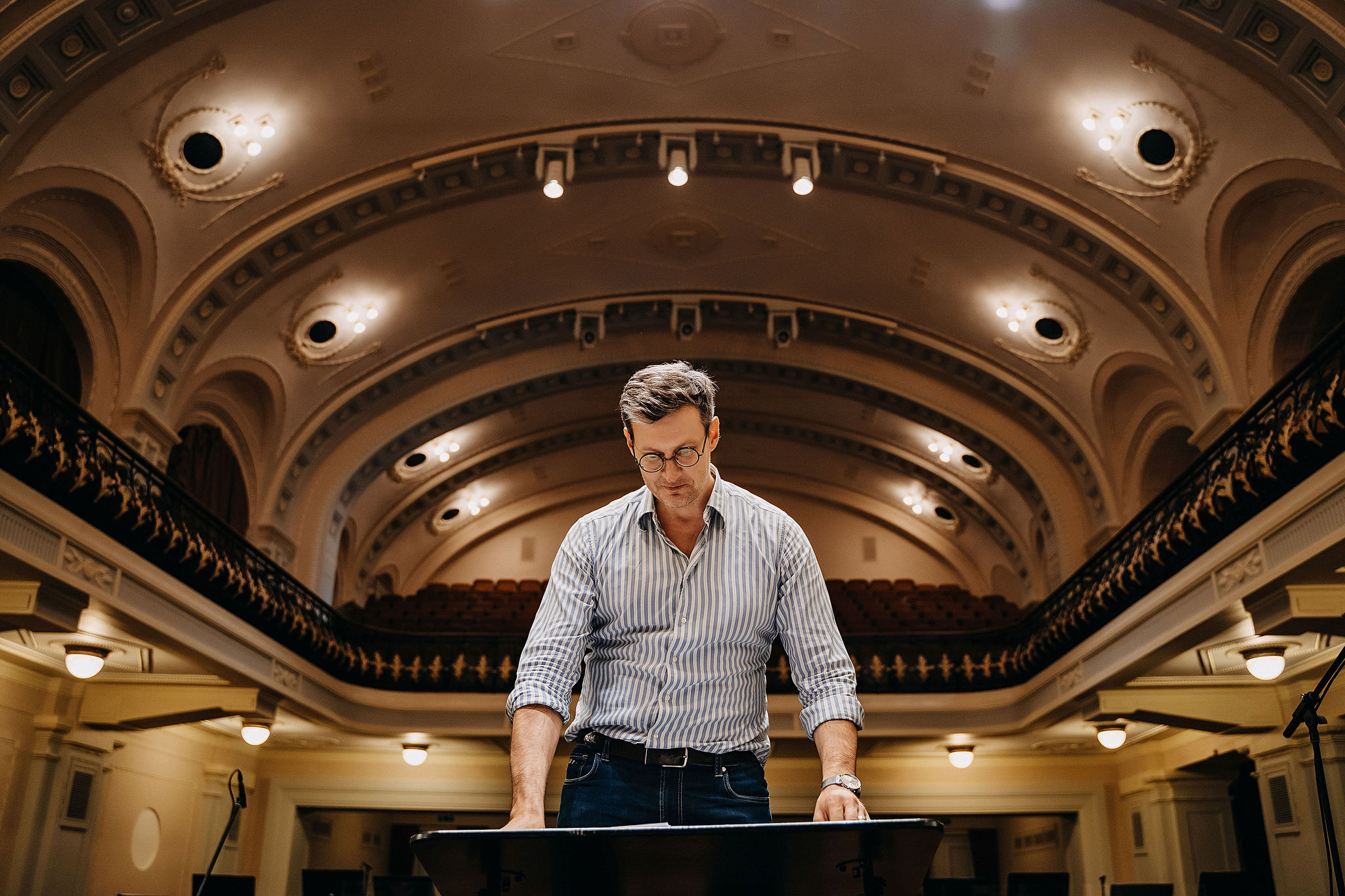
The spectacular performance of video, light, movement and music, which will be broadcast to the whole world, will be extended by an invitation to play. Those gathered near Žalgirio Arena will have the opportunity to continue the festive evening with The Beast of Kaunas city secrets game.
The game will take place all over the centre of Kaunas. All participants will be invited to take a special map and search for the places where the Beast has left his trace – and thus decipher the answer to the game. The first 1000 winners of the game will be awarded Kaunas 2022 prizes.
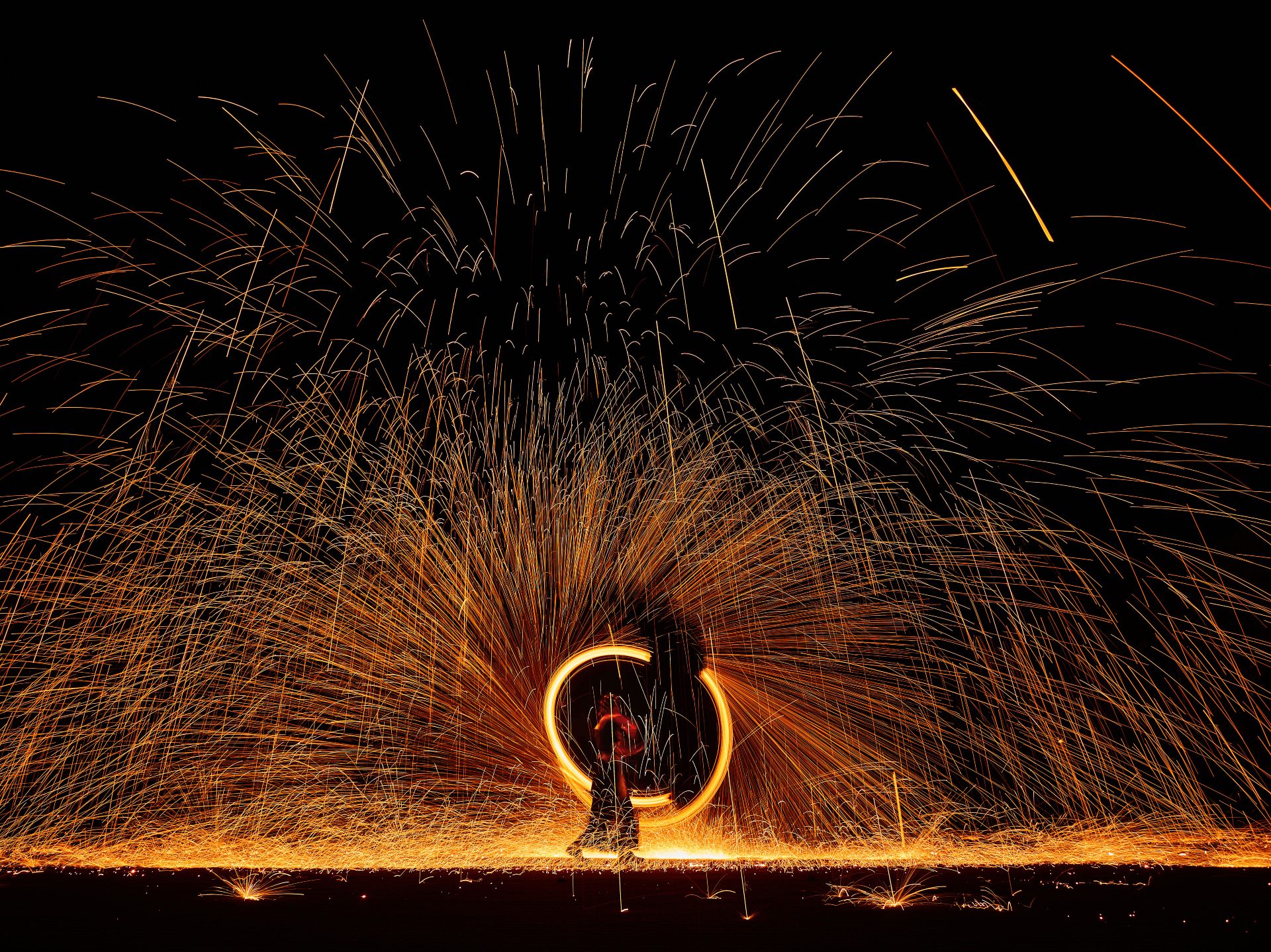
100 Events for the Opening Weekend
Around 100 events have been planned for 22 January and throughout the weekend in Kaunas and Kaunas district to give everyone an insight into the Kaunas 2022 programme throughout the year.
The weekend of January 21–23 weekend will see the opening of some of the most important exhibitions of the European Capital of Culture, the first of which will be the exhibition “What We Don’t Remember” by the South African contemporary art star William Kentridge (part of “Kaunas 2022” programme, curated by Virginija Vitkienė at M. K. Čiurlionis National Museum of Art), the international exhibition “Modernism for the Future 360/365” which will highlight the significance of Kaunas’ architecture and the importance of its context, (part of “Kaunas 2022” programme, Kaunas central post office), and Yoko Ono’s installation “Ex It” in the exclusive location of the Bank of Lithuania (curated by Contemporary Art Centre). A number of sneak peeks are also planned, giving a taste of what Kaunas 2022 will offer later this year.
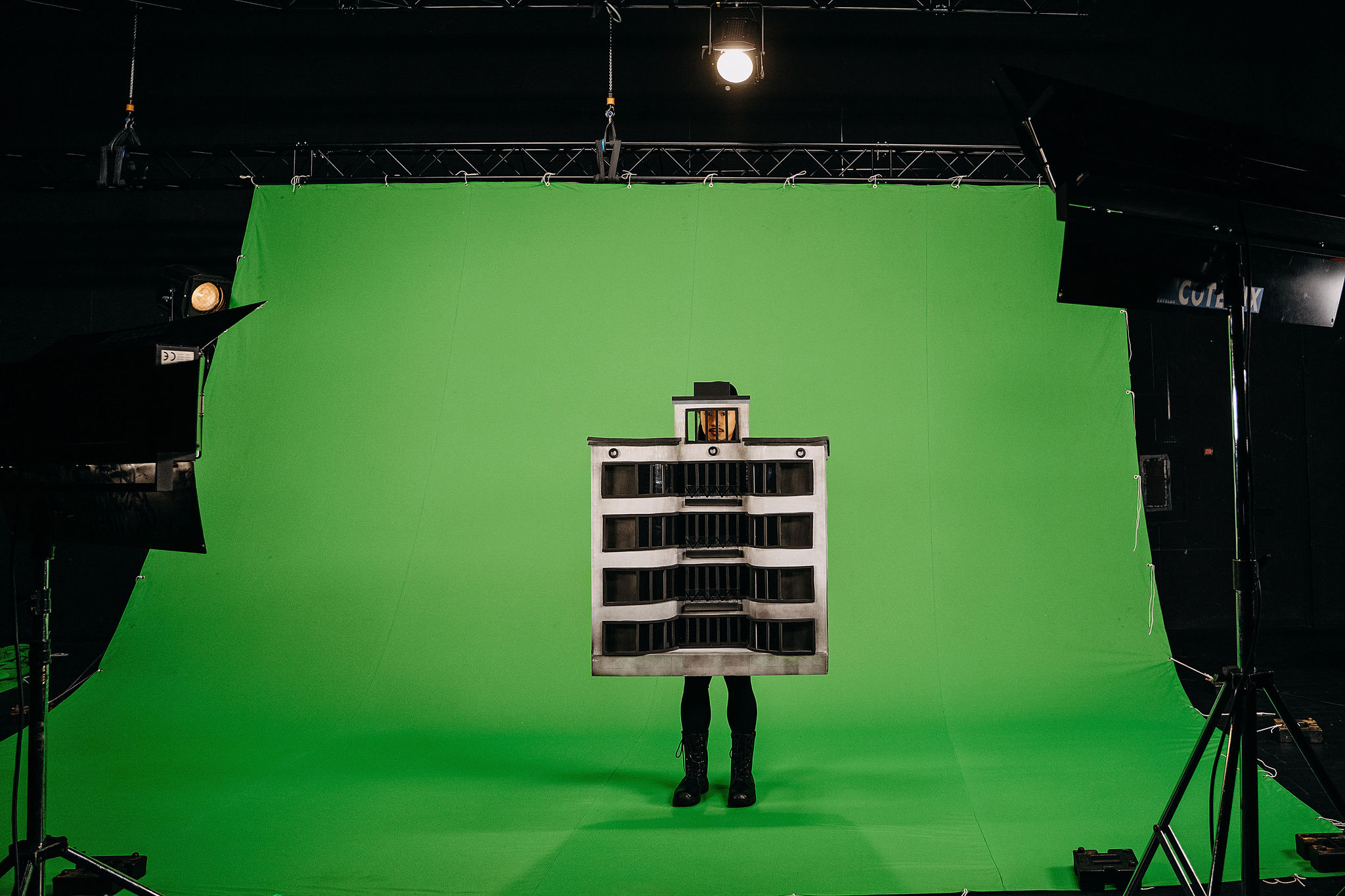
“For the first of the three key weekends of Kaunas 2022, together with dozens of partners, we have prepared a vibrant programme – I invite everyone to take the time to get acquainted with it and to plan your routes in the city well in advance so that you can see and appreciate as much as possible. I do not doubt the awareness of Kaunas citizens and visitors – our team is doing everything possible to make European cultural events as safe as possible. It is up to each individual to adapt to the pandemic reality. Taking into account the changing conditions, we have prepared several effective and creative scenarios for the opening weekend – of course, we hope that we will be able to enjoy Plan A, which has been in the works for the longest time,” says Virginija Vitkienė, Head of Kaunas 2022.

To guarantee the maximum comfort and safety for those attending the “Uprising” on 22 January, car traffic will be restricted on Karaliaus Mindaugo Avenue and in the Naujamiestis district. Detailed information regarding traffic restrictions will be published shortly. During the event, it will be mandatory to comply with the current Covid-19 regulations, including keeping physical distance and wearing a face mask.
To secure a spot at the opening event, guests will be required to register beforehand and get a free pass at www.kaunas2022.eu (registration open from 10 January).
The detailed programme of events is available on the dedicated mobile app “Kaunas 2022” (available for download on App Store and Google Play), as well as on www.kaunas2022.eu/sukilimas
William Kentridge: Breaking the Forms of Constructed Ignorances
William Kentridge's grand exhibition (curator Virginija Vitkienė) That Which We Do Not Remember, which will take place at the National M. K. Čiurlionis Art Museum, should be noted as one of the most important events in next year's “Kaunas – European Capital of Culture 2022” program. Born in South Africa, in Johannesburg, in 1955, the artist with Lithuanian roots has been known and honored in the arts for many decades, and his works have visited the world's most important galleries and become part of large collections. Kentridge is an intellectual who provokes emotion and reflection. His sources of inspiration range from science to literature, and his artistic means range from charcoal drawings, paintings, textiles, animated films to opera productions. This reflects the author’s own educational spectrum and wide field of interest.
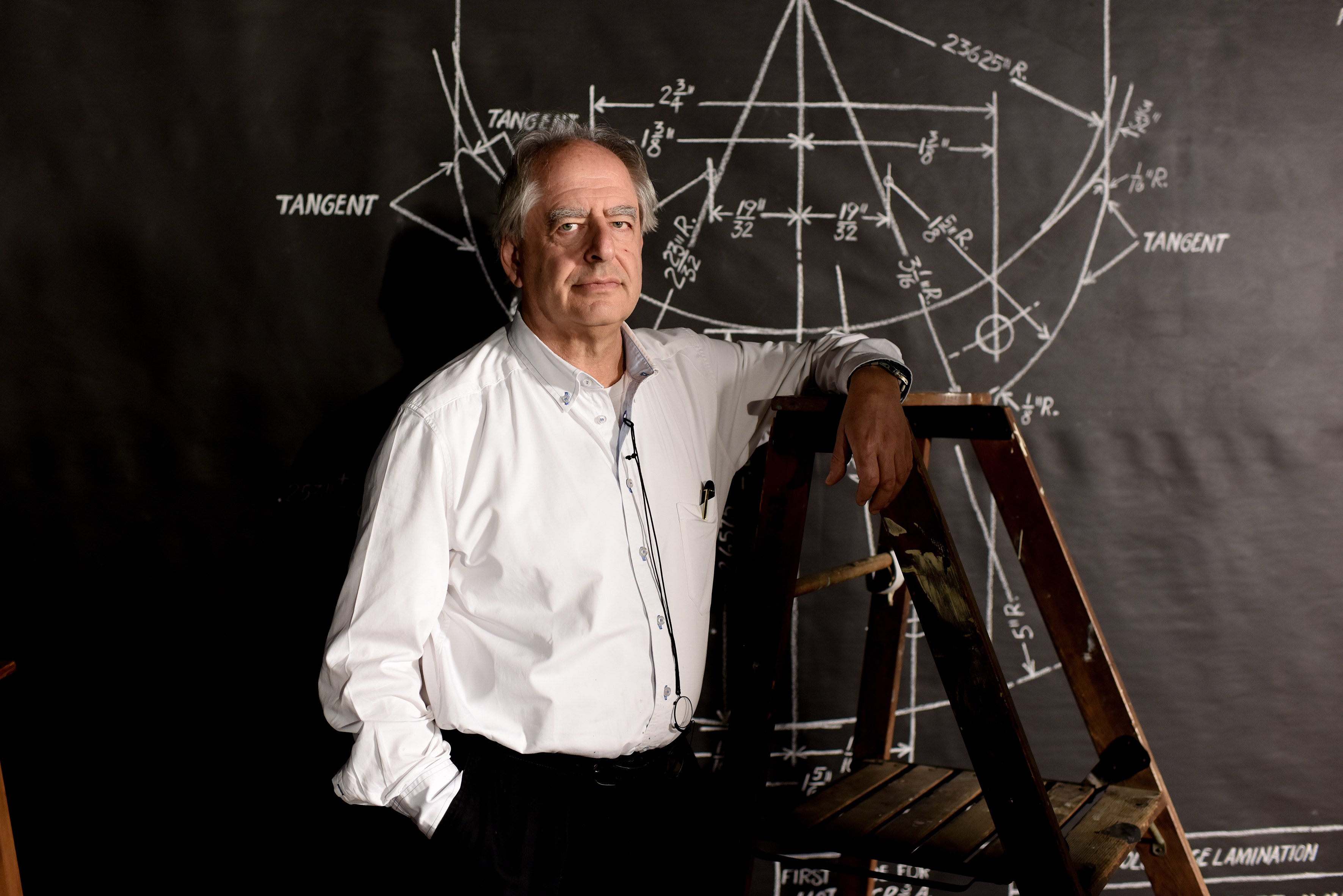
- You studied a lot yourself and you certainly had great teachers. Are you a teacher yourself?
- My wife likes to tell the story about Jewish husbands: they never leave you but when they turn fifty, they become rabbis. So sometimes I think I have become a 66-year-old rabbi. And in the context of The Centre for the Less Good Idea, a lot of what I do is in a role of teaching.
For years when I was asked to teach, I thought, well, I’m still learning, I've got nothing to teach. Now I feel I’m still learning, but I do have something to teach. And more than that, often I learn from working with the younger artists.
There’s been enough experience in the studio; sometimes now I am able to respond to the misery of the anxieties that younger artists have, and which I had when I was much younger. Not that there aren’t anxieties now, but they are different anxieties, they’re not those of a young artist.
- What gives you the courage to create?
- The activity of continuing with work day after day, whether you’re a writer or a painter, is hard when you’re starting. I think that requires more courage than it does to keep going when you’ve got a trajectory and a momentum, and an experience of projects having worked out in the past.
When you’re starting out, every new piece is vital. If one drawing or one painting seems to disintegrate and be not worth it: is this telling me the truth about who I am? I’m doomed for things to fail! So, to get past that is a kind of artistic courage. It also takes a mixture of obstinacy, stubbornness, thick-skinnedness to not mind the responses of people to one’s work if they don’t like it. This is never something that I’ve been able to do.
I think to be an artist is so much about a psychic lack, a gap. This gap is feeling that in yourself you’re not enough. You have to leave this trail of objects and things behind you for other people to see, so that you can see yourself, looking at these objects. It’s not about courage, it’s about inadequacy.
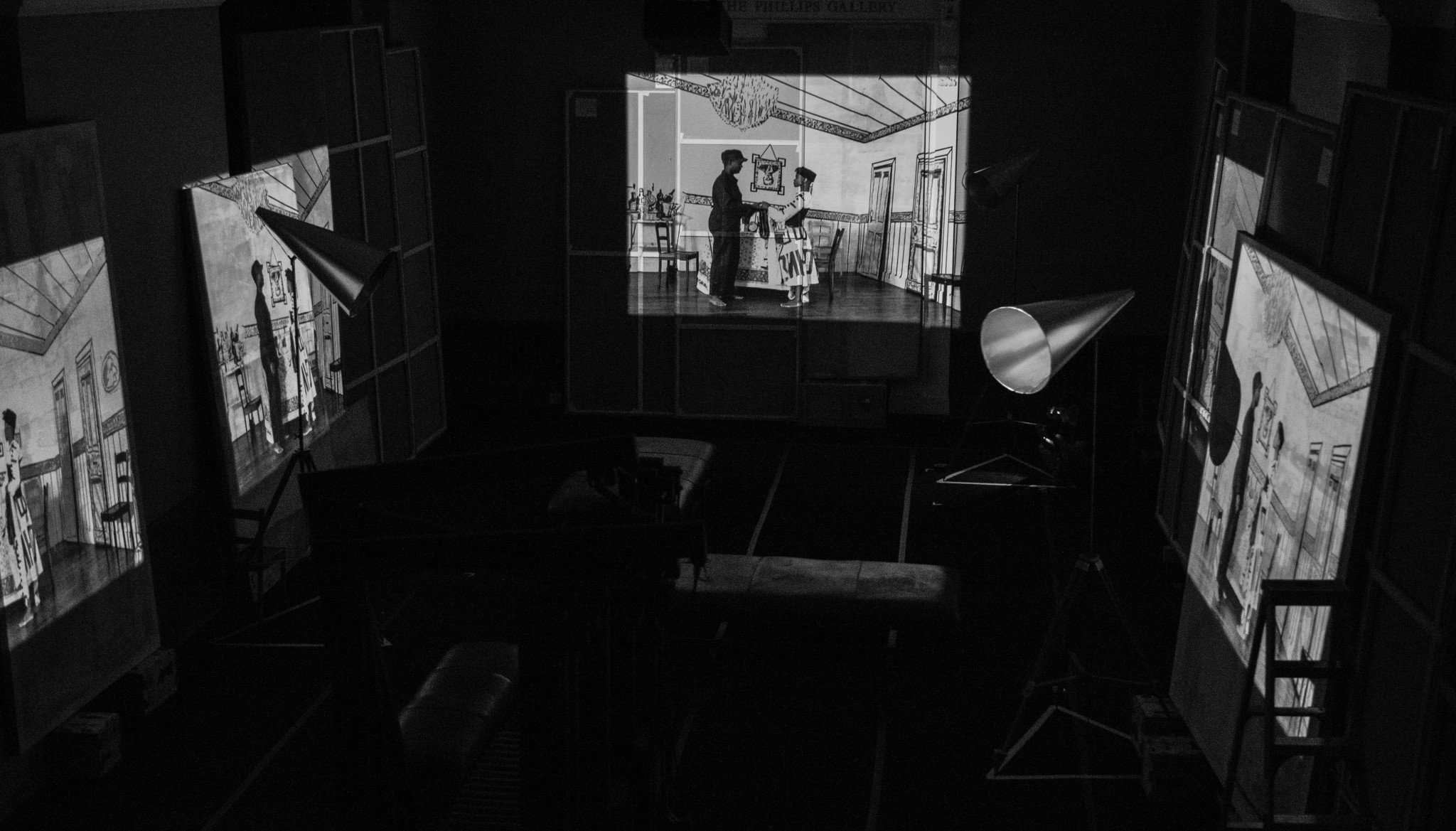
- What connection, if any, do you see between originality and authenticity?
- Authenticity as a starting point doesn’t interest me. I’m interested in what emerges through the process. I’m more interested in stupidity, or another way of saying that: giving the whim, giving a quick idea, the benefit of the doubt and seeing where that leads us.
The vast majority of the projects I’ve done, and the discoveries which have been interesting to myself or to other people, have inauthentic origins. You start from thinking of one thing and then you’re following one idea, and then something else emerges. It’s not that a clear thought and a clear line of investigation lead to an answer to a question you’ve asked yourself.
- In our works one can notice a lot of negativity, reversing, negation. Is this your artistic tool? What does this mean for you?
- I’m interested in the negative in the photographic, metaphoric sense. The negative is what is recorded on that piece of film from which we make a second negative, which is the positive print.
You film the ants on a sheet of white paper moving around in their different formations and then invert: the white paper becomes the night sky and the black ants become spots of light in the night sky. You’ve made a herd of moving stars and planets.
That’s the practical sense of the negative, which is not the void, but it shows the explanatory power of darkness – rather than assuming, from Plato onwards, that everything has to do with light as an explanation, that one has to bring light to darkness to understand. Sometimes one needs that strange mixture of darkness and light for things to make sense.
A black hole in space as a place of massive gravity that will absorb all light and anything that it swallows. That finality. Of course, in understanding physics I am trying to make sense of our own black hole, a six-foot grave that we’re heading into, that void. If you can’t bear the thought of the finality of that void, you need to believe that something can still emanate from that darkness, in which case one believes in a soul.
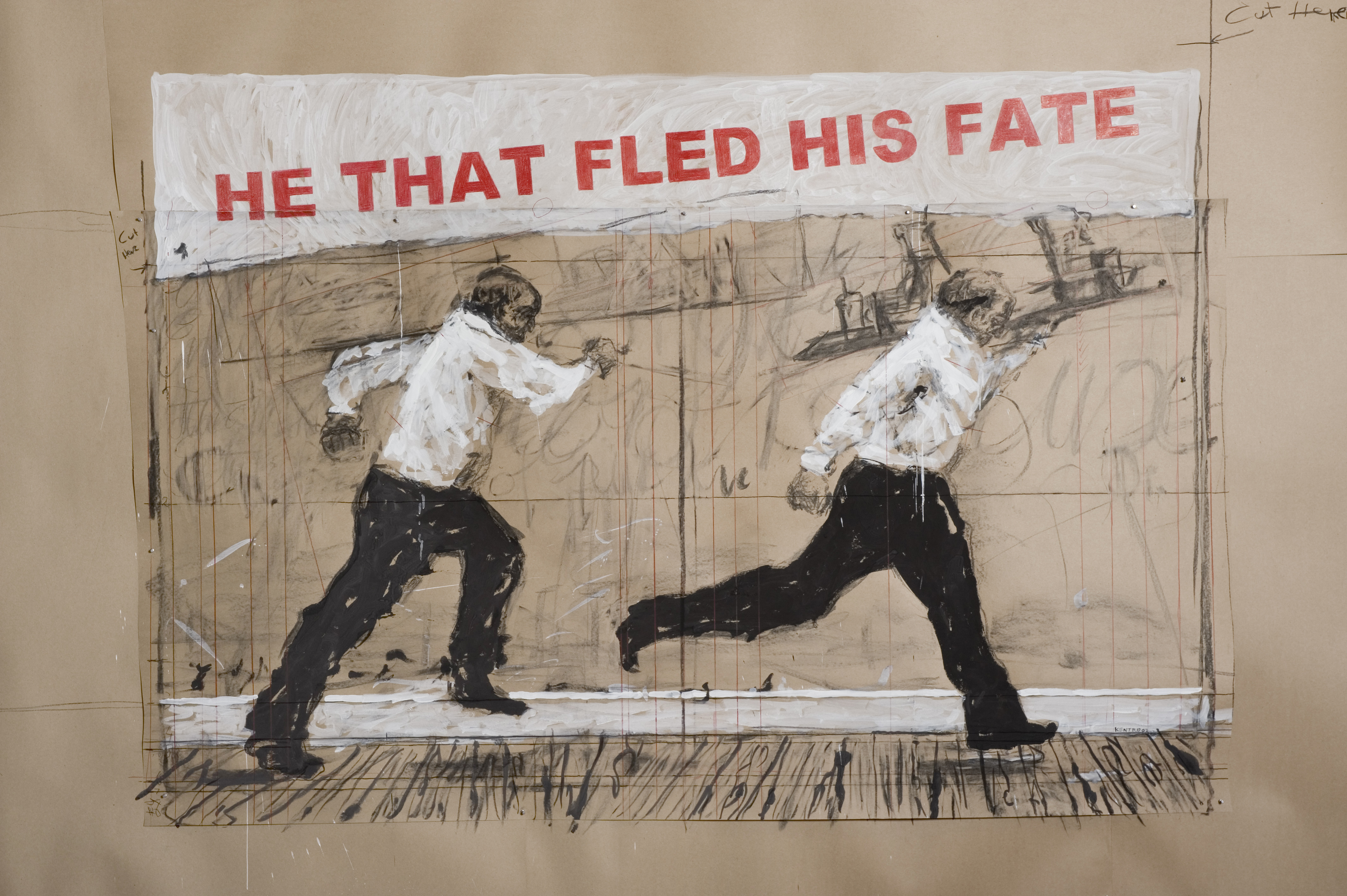
- Quite often you involve entropy in your work. What is it?
- The artist’s job is to resist entropy. If you throw a vase up, it shatters on the ground. If you pick up all the shards and throw them back into the air, it’s very unlikely that they’re going to reform exactly as the intact vase was before it was broken. It’s that statistical improbability, which is the basis of entropy, of something that is ordered breaking down into a state of disorder. The artist’s job is to take those fragments, the shards of the vessel, those torn up pieces of paper, and reconstruct something new, a new image. The form is of collage, but it’s a different way of saying that we construct our understanding from fragments that we pick up all around us and inside us. That battle against entropy – and the fact that in the studio this is a battle that we win every day – makes entropy an important and good category to work with.
- What is your relationship with tradition?
- I am interested in mistranslation, in imagined context, rather than deeply understood context. I’m skeptical of an art of identity and the politics of identity, but rather interested in the politics of bastardy, of hybridization, of resisting tradition and believing also that most traditions are invented and constructed. Certainly, in the colonial world, the work that was done by the colonial administrations was to invent the tribes, the cities, the clans, the tartans of Scotland, to understand those as constructions rather than as things to be discovered.
We have to be aware of tradition, because even if we deny it, our eyes and our brains are constructed through all the things we’ve heard, seen and been told. Our eye sees differently to the way anyone’s eye has seen in the centuries before us.

- Could art be called the best tool for creating narratives of history?
- We have to understand different forms of constructed ignorances in which things are deliberately hidden from us, histories are hidden from us, archives closed, shameful facts burned. I think one of the things that I’m aware of now is needing to give more attention to the periphery, to the things which one puts in the side cabinet. To take them out again, look at them again.
Because of art’s way of working with fragments, of constructing meaning through collage, is that we can construct other narratives, and narratives of history as well, by putting together different fragments. So, what is a natural process in the studio – taking a fragment from one drawing, a detail from a photograph, constructing an image from these different fragments – is also a model of how we can think of history.
- Your upcoming exhibition is of impressive scope and will be given special attention. You have not visited Lithuania yourself yet. What is your personal relationship with our country?
- I've always thought of myself as being of that part of South African Jewry, the Litvak – people who came from Lithuania (which is where most South African Jews come from). But I’ve never been to Lithuania.
My grandfather in his autobiography only gives one sentence to the place where he spent the first several years of his life. He simply says: I was born in Lithuania, from which many South African Jews come, I left Lithuania and went to England.
I have no sense of Shtetl life, of my ancestors’ life in Lithuania. I have no wish for restitution, certainly not of retribution, of thinking that I’m owed anything by Lithuania.
Eleven years ago, my daughter visited Lithuania and found almost no acknowledgement of what had happened there. I’m interested to come to Lithuania to see how it feels and whether my imagined country and its history corresponds to what I find when I am there.
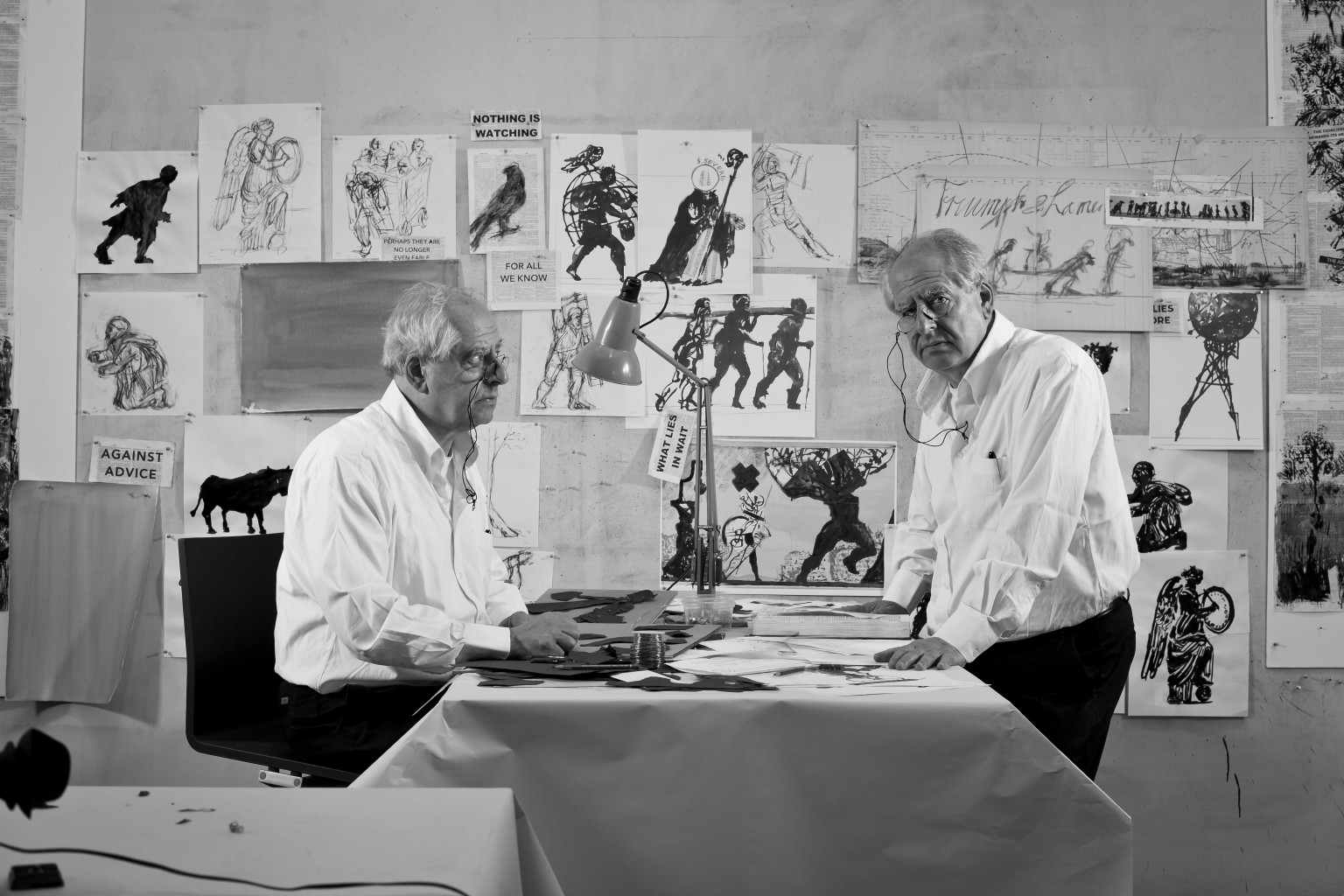
Kaunas and the surrounding Kaunas district are ready to become one big European stage next year, offering over 1000 events. More than 40 festivals, 60 exhibitions, 250 performing arts events (of which more than 50 are premieres), and over 250 concerts are planned to take place in 2022. All this is delivered by Kaunas 2022’s team of 500 people, alongside 80 local and 150 foreign partners. 140 cities in Lithuania and the world, 2,000 artists, 80 communities, and 1,000 great volunteers. The Official Opening ceremony 22th, January, 2022.
Full programme: www.kaunas2022.eu
Interviewed by Sandra Bernotaitė
Daiva Citvarienė on “The Jews of Kaunas”: "Facts, dates and names are not enough to tell the story well"
To awaken the multicultural memory of Kaunas city and towns in its district and remind of its rich history is one of the most ambitious goals of the project Kaunas – European Capital of Culture 2022. To achieve that, the program Memory Office was launched together with the project. Just in time for the grand opening of Kaunas 2022, the team behind the Memory Office published a book called “The Jews of Kaunas”. Dr Daiva Citvarienė, the curator of the program, reveals the reasons for the book and her personal relationship with Jewish Kaunas.
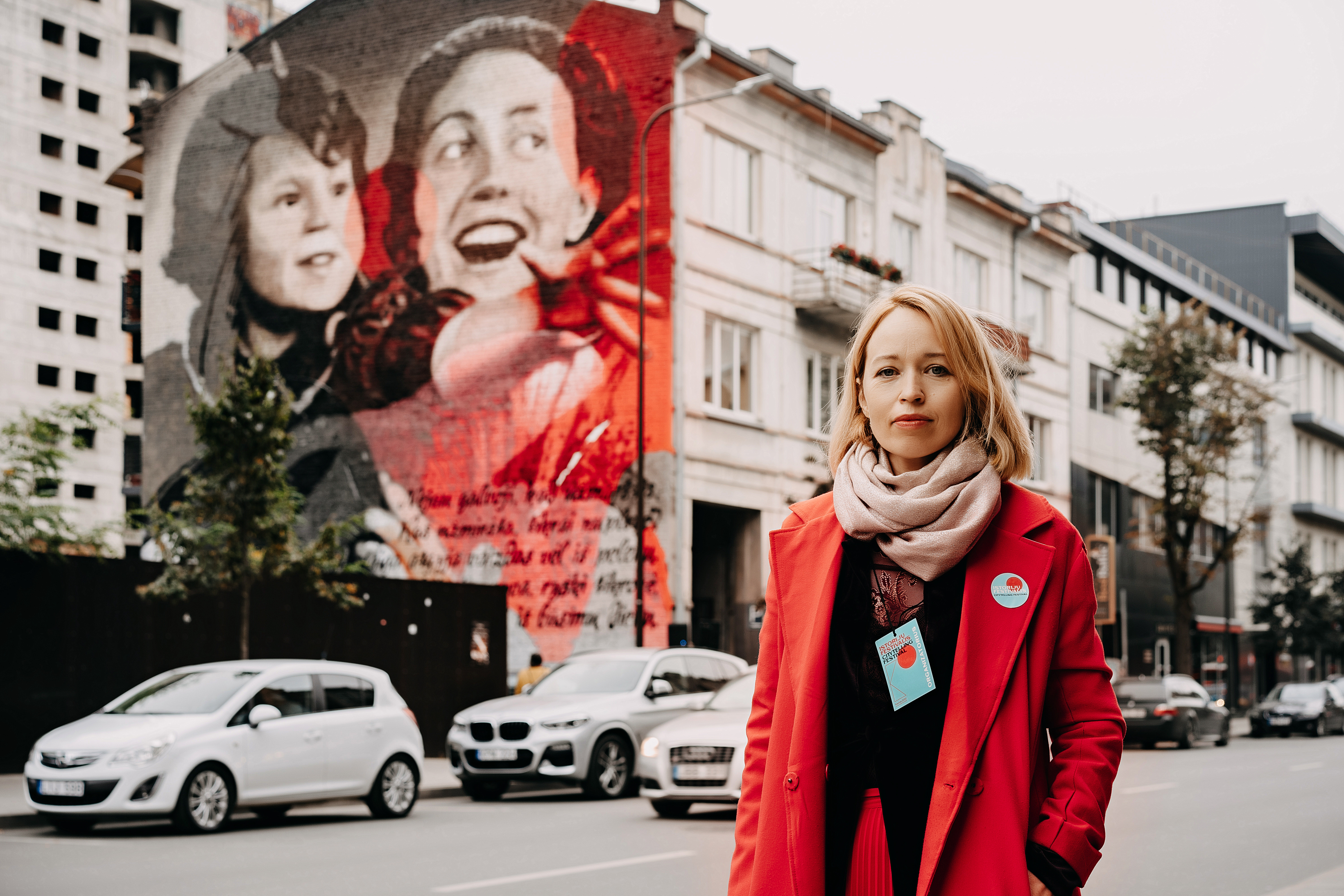
- “The Jews of Kaunas” could take the shape of a film or any other storytelling form. Why a book?
- Of course, a film of such kind could be made. I want to stress that the Memory Office, part of the Kaunas 2022 project, has already presented a handful of initiatives that highlight the Jewish memory of Kaunas, including a series of murals reminding us of the Jewish citizens that once lived in our city. I believe the book is one of the most important projects of such a kind. We started working on its idea right after Kaunas secured the title of the European Capital of Culture. Firstly, we wanted to fulfil the gap in the city’s history. Secondly, we found it essential to create a sustainable product that would not end after 2022. In this sense, a book is much more durable than an exhibition or a stage performance. It is our tribute to the people who lived here and helped build the city, to those that projected their future in Kaunas, and whose lives were so brutally terminated.
- The articles in the book are based on numerous sources and illustrated with historical documents, photographs, many of which haven’t been publicised before, even advertisements. Which findings that helped shape the book were the most surprising and touching?
- I can’t speak on behalf of other authors, primarily professional historians – they probably have a different relationship with iconographic material. I’m not a historian; therefore, I do not really care if a photograph was already published and how rare it is. The amount of history in the picture is much more vital for me and its capability of telling a regular reader more about a specific time, person, or event.
What really made me happy was seeing a picture of the pergola the Kaunas-born Hebrew novelist Abraham Mapu wrote in. I had read about the pergola numerous times, and this photograph helped me better imagine the stories I had found and the city in those times.
Another discovery was a collection of the burned-down Kaunas Ghetto. These were some of the most shocking images of Kaunas I had ever seen.
No less important than illustrations are the memories and testimonies of people that lived or visited Kaunas. These stories also help illustrate history. I am happy we could include quite a few memories about Kaunas at the end of the 19th–the beginning of the 20th centuries, found in English-language sources. These enriched the picture of the city we tried to create with the book. Another significant source was the stories we wrote down when talking to current-day Kaunasians, including Fruma Kučinskienė, Julijana Zarchi, Bella Shirin and others.
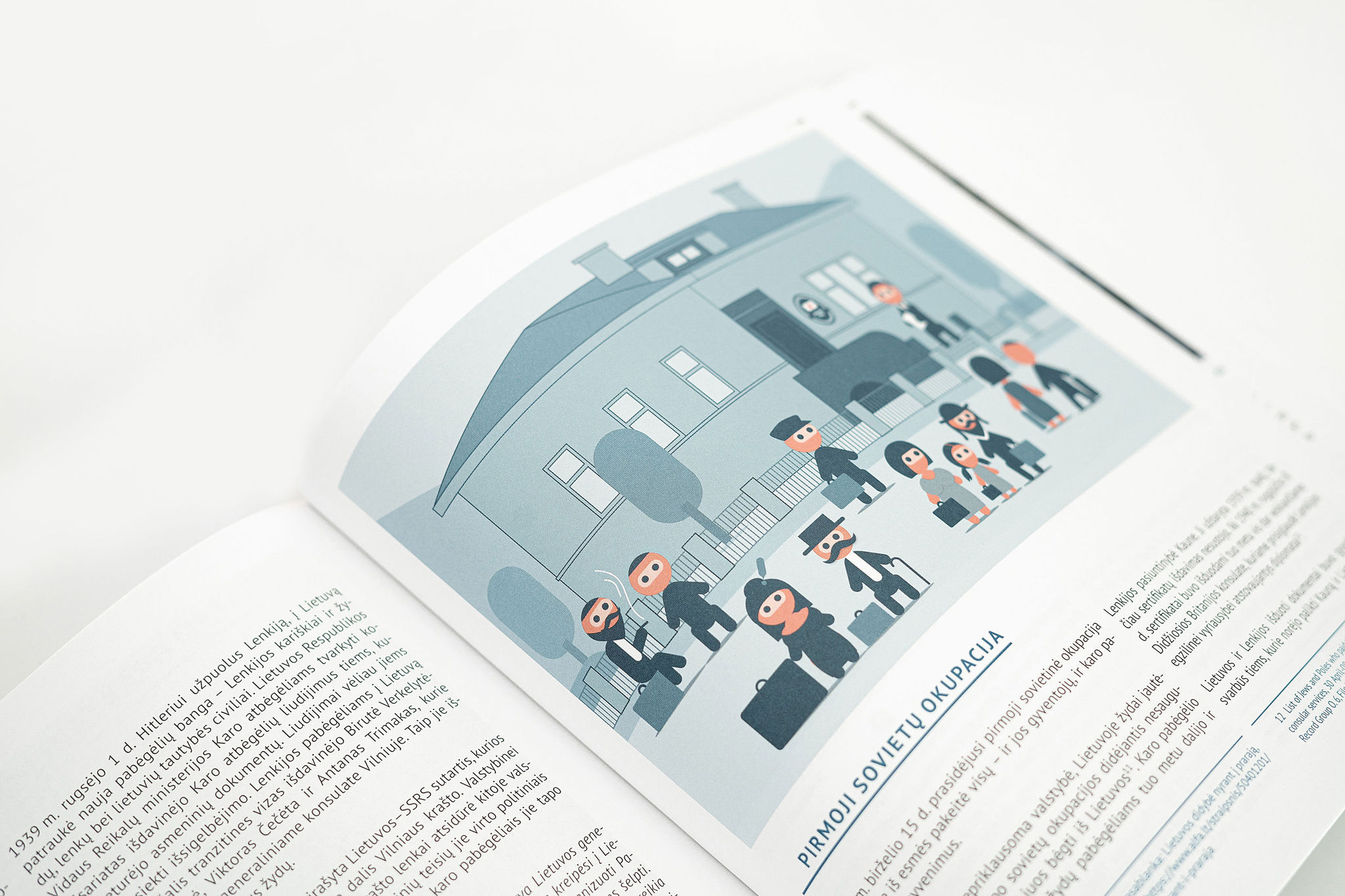
- The book covers some five hundred years, yet it’s just 200 pages. How did you concentrate the narrative – there must be something left for future publications, right?
- I find it essential to stress that we did not publish a book for the academic society but rather for the curious readers interested in history. It is by no means an encyclopedia. I see it as an introduction to the world of the city’s past, a world not much explored yet. We included some of the most important names and their contribution to education, culture, medicine, industry, business and other fields of life, as well as the painful pages of history. I hope the publication will inspire future research.
Regarding the form of the storytelling, it was essential for us not to make this a list of names and facts. In terms of building a relationship with history, I find what museums do very interesting. For example, in POLIN Museum of the History of Polish Jews in Warsaw, the narrative is based on quotes, memories and testimonies. We use similar principles in the book.
I am positive that facts, dates and names are not enough to tell the story well. To genuinely understand how people lived 50 or 150 years ago, we need to comprehend how they thought, felt, and saw the world. That is why we have included numerous quotes and memories from historical sources. These inserts are witnesses to time, adding life, breath and colour to the big picture.
- Did you encounter many contradictions in various sources? Is it easy to pick the most accurate truth when many event witnesses are not alive anymore?
- The research of the history of Kaunas Jews is still quite fragmented. We compiled the book together with historian Arvydas Pakštalis and aimed to collect what’s already done in the field, connect the stories, and fill some gaps. Arvydas is a keen visitor of archives, and he managed to correct some of the statements that have been floating around for some time now. On the other hand, I am sure that new facts and discoveries will appear after the book is out, and some more corrections might need to be done. I think it’s a natural process as the history of Jews in Kaunas is just beginning to be written.
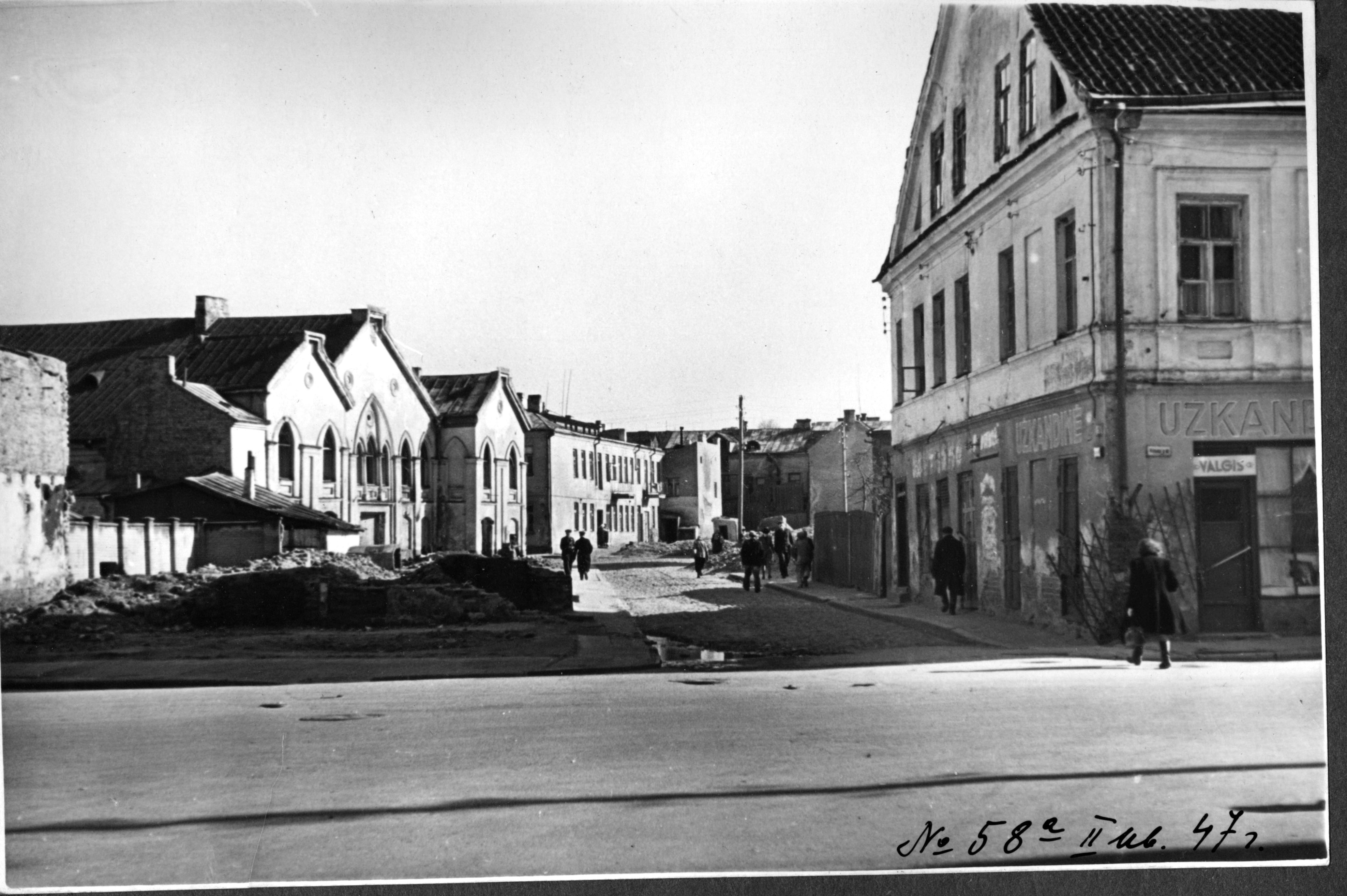
- In recent years, we lost quite a few bright people necessary for the context and content of the book, namely Leonidas Donskis and Irena Veisaitė. Do you feel you didn’t have the chance to interview some personalities?
- Sadly, we dedicated the last pages of the book to those that left us too early, both Leonidas and Irena. It’s a pity we didn’t discuss the book with Irena when we still had the chance. And, when working on the text about Leonidas, we realised how little we know about the history of his family. Still, we found it extremely important to include stories about them and other contemporary Kaunasians and to stress that the Jewish history in Kaunas is still alive.
- The author collective is impressive. What was the book writing process like?
- Arvydas and I first collected what was already out there. The hard part of the job was connecting the fragments into a narrative; this is where Arvydas stepped in and filled the gaps. My task was to represent the reader and raise questions answers to which might seem obvious for a historian yet not always clear for an average citizen. I found it meaningful also to present traditions, culture and even the language – we decided to include a glossary.
- If someone decides to dig deeper into a period, a family or an event described in the book, which choice would make the Memory Office the happiest?
- As I’ve mentioned, these are only the first steps of the research of Kaunas Jews. The book could have been three times thicker! I hope some of the names we could not include will be remembered and researched by other authors. We’ll appreciate every initiative to revive the history.
- What were the first reactions to the book?
- The Kaunas Jewish Community knew about the process from the beginning, and I believe they were looking forward to reading the book. For us, it’s not just a tribute to people who lived there, but also a gift to the members of the community that became our close friends. For many of them, it’s a meaningful sign showing that their history and community drama are not forgotten.
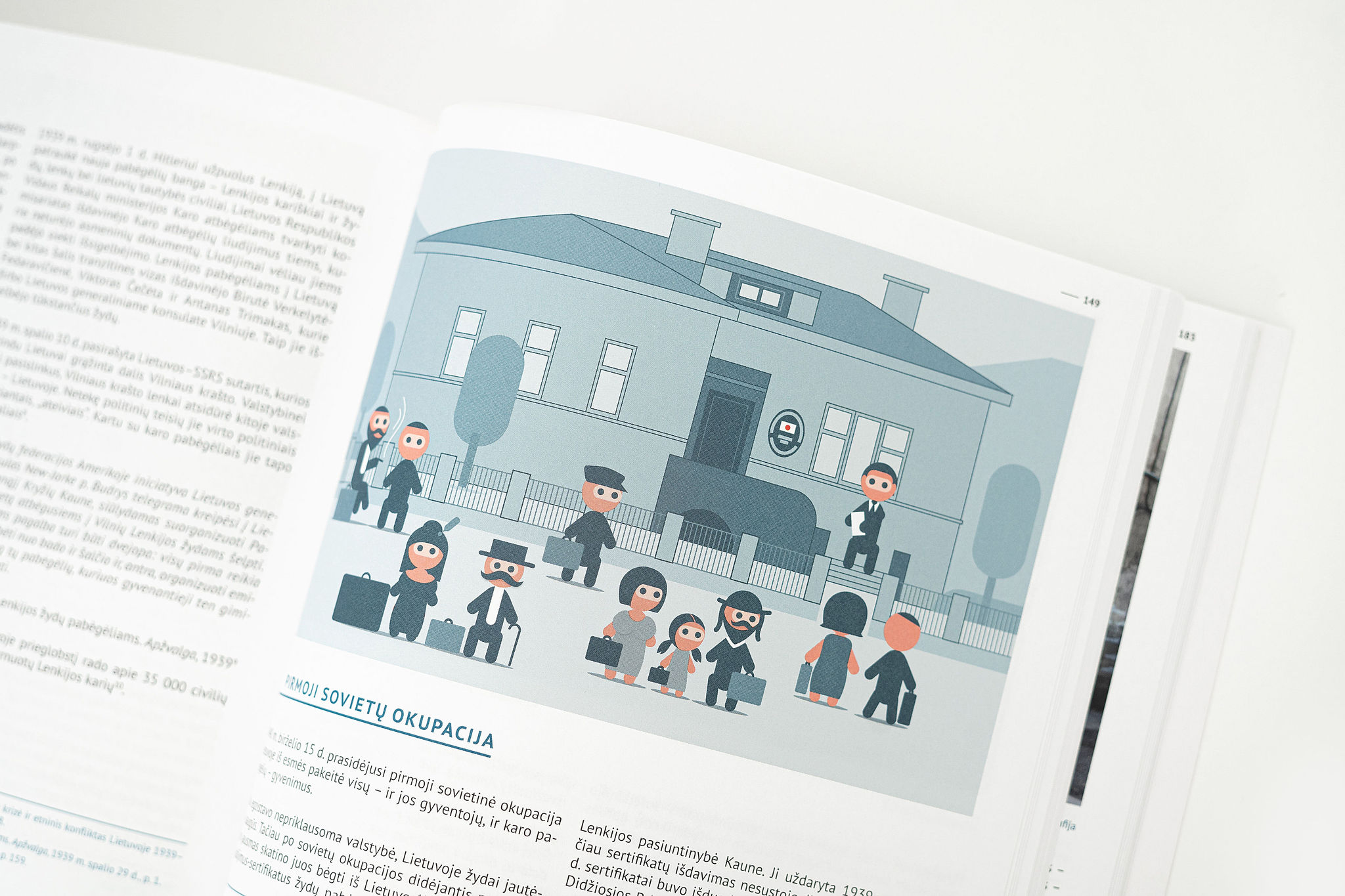
- Can the book cause pain?
- It is painful for everyone that understands the size of the tragedy that happened in Europe and our city during WW2. Looking at the prewar photographs and understanding what kind of faith awaits the smiling people in them simply brings tears. One understands how much we lost by telling the beautiful stories of people who contributed significantly to building Kaunas. What’s hard to comprehend is how it could happen.
- Along with documents and photographs, the book is illustrated by original drawings by Darius Petreikis, who also created the Beast of Kaunas. How do the pictures enhance the texts?
- We did not aim for a traditional book full of facts and documents. We wanted it to cause curiosity. History can be fascinating, and it can be presented playfully. We’re speaking about a period of several hundred years about the community’s culture, traditions, and customs. We wanted to tell that story lightly, with a pinch of humour. After all, Jewish history is not just about the Holocaust. It’s so much more, it’s centuries of culture, traditions, customs, and it was important for us to remind that.
- Will the English version of the book become a meaningful souvenir from Kaunas, the European Capital of Culture?
- Indeed, the audience of the book includes Litvaks of the world and everyone else interested in the history of our region – this is why we prepared the English version, too. On October 29–30, the World Litvak Forum will take place in Kaunas; the Memory Office will invite everyone to more than 20 events dedicated to Jewish memory, including exhibitions, concerts and performances. I must also mention That Which We Do Not Remember, an exhibition by William Kentridge, one of the most famous Litvak artists, that will be displayed through 2022. Our book will be a meaningful bonus to the extensive programme and, yes, a meaningful souvenir.
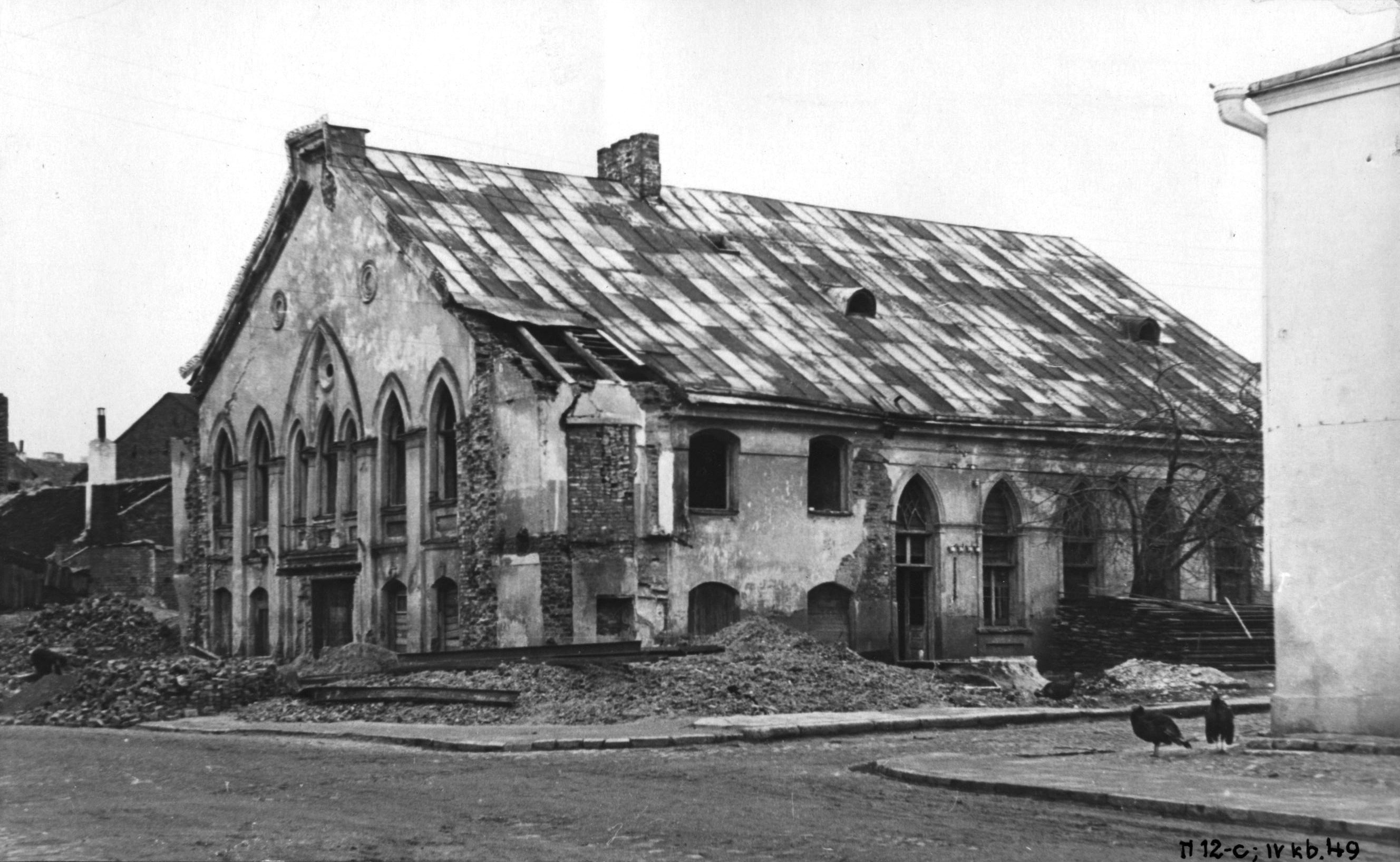
- Daiva, please share some of the places in Jewish Kaunas that are the most important for you and still preserve its aura.
- I discovered the Jewish Kaunas some five years ago when working on an audiovisual route called The Spirit’s Guide to the old City. Looking for interesting objects made me stop in front of buildings I used to pass by every day and try seeing what’s not always apparent from the first glance.
I believe the Jewish Kaunas is still something hidden. Many signs of history have already disappeared or become unnoticeable. For this reason, the Memory Office initiated the creation of new murals inspired by old photographs and representing forgotten pages of our city’s history.
Speaking of the aura, one of such buildings for me is the current Kaunas Musical School No. 1 on J. Gruodžio St. In 1905, Rabbi Yitzchak Elchanan Spektor established an orphanage in this building. Amazingly, you can still see the traces of old writings on the facade. Also, my son learned how to play the piano there, which I find pretty symbolic.
Another location essential for me to is my birthplace, the former Jewish hospital on A. Jakšto St. I am looking forward to seeing it alive again. Last but not least is the Kaunas Choral Synagogue, one of the most beautiful examples of Jewish sacral architecture, still waiting for its new golden era.
Places no longer identified as Jewish or not remembered as such are also very important. Among those are the J. Naujalis Music School (former Jewish Realgymnasium), VMU Law Faculty (Former ORT School), the former house of doctor Elchanan Elkes on Kęstučio St. or the New synagogue on Birštono St. which today is a car repair shop. I could also elaborate on the Old Town and Laisvės alėja, full of former bookstores, shops, barbershops, cinemas and restaurants established by Jewish businessmen. We must remember and remind this page of the history of our city.
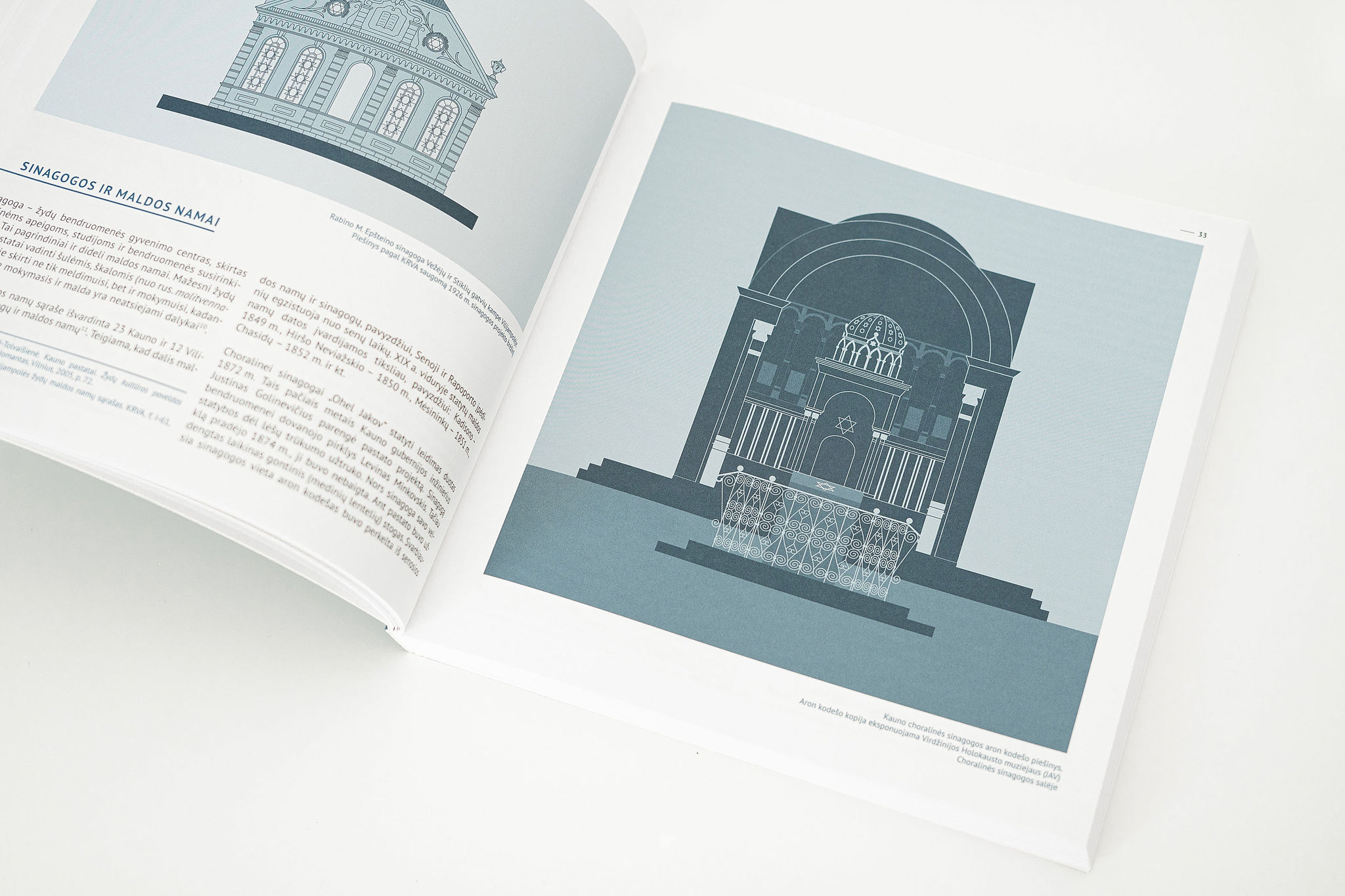
Kaunas and the surrounding Kaunas district are ready to become one big European stage next year, offering over 1000 events. More than 40 festivals, 60 exhibitions, 250 performing arts events (of which more than 50 are premieres), and over 250 concerts are planned to take place in 2022. All this is delivered by Kaunas 2022’s team of 500 people, alongside 80 local and 150 foreign partners. 140 cities in Lithuania and the world, 2,000 artists, 80 communities, and 1,000 great volunteers.
Full programme
Kaunas as the Capital of Contemporary Art - Exhibition Guide for 2022
On its way from temporary to contemporary, Kaunas has also become the city of contemporary art. Even before the official opening of the Kaunas – European Capital of Culture 2022 programme, art lovers have marked routes to the exclusive events, exhibitions, installations and performances held in the city. The year 2022 will enhance the contemporary vibes with international highlights, brave declarations and globally praised personalities.
The art map of Kaunas does not confine the visitors in traditional gallery spaces. Its density, however, demands comfortable shoes and a high pace. Below are just a few from more than 60 exhibitions scheduled for 2022, each researching different aspects of history and the future.
13th Kaunas biennial Once Upon Another Time... gyveno jie jau kitaip
12 Nov 2021 – 20 Feb 2022
The 13th Kaunas Biennial (curator Josée Drouin-Brisebois (Canada)) asks: How can we connect different places of the world with people’s stories? Audiences can hear these stories in films, sculptures, installations, performances, and through the spoken word, text, poetry, and other forms.
The Kaunas Biennial exhibition reflects on different examples of humanity’s resilience and adaptation. The exhibition presents works by 23 international artists and groups, exploring myths and fairy tales and personal and community stories of survival and transformation experienced in reality. Encountering contemporary art in unusual places, including Basketball House, T. Ivanauskas Museum of Zoology and Devils’ Museum, and public spaces, visitors to the biennial are invited on a tour of the city of Kaunas and the history of human survival, presented in new ways. The programme is created by famous Lithuanian and interational artists: Lina Lapelytė, Pakui Hardware, Jonas Mekas, Janet Cardif ir George Bures Miller, Christian Boltanski, Jeremy Shaw, Augustinas Serapinas, Svajonė ir Paulius Stanikai, Indrė Šerpytytė, Emilija Škarnulytė, Artūras Raila, Goodhearter Wisher, Shary Boyle, Kristina Inčiūraitė ir kt.
“Stories from the past, present and even the future give us perspectives from different worldviews and cultures, and captivating narratives featured in the work of these artists help us empathize and establish personal connections. The 13th Kaunas Biennial hopes to turn stories of human resilience into a source of inspiration and an example from which we can learn how to cope with the difficulties and challenges that await us,” says the curator of this year’s Biennial, Josée Drouin-Brisebois (Canada).
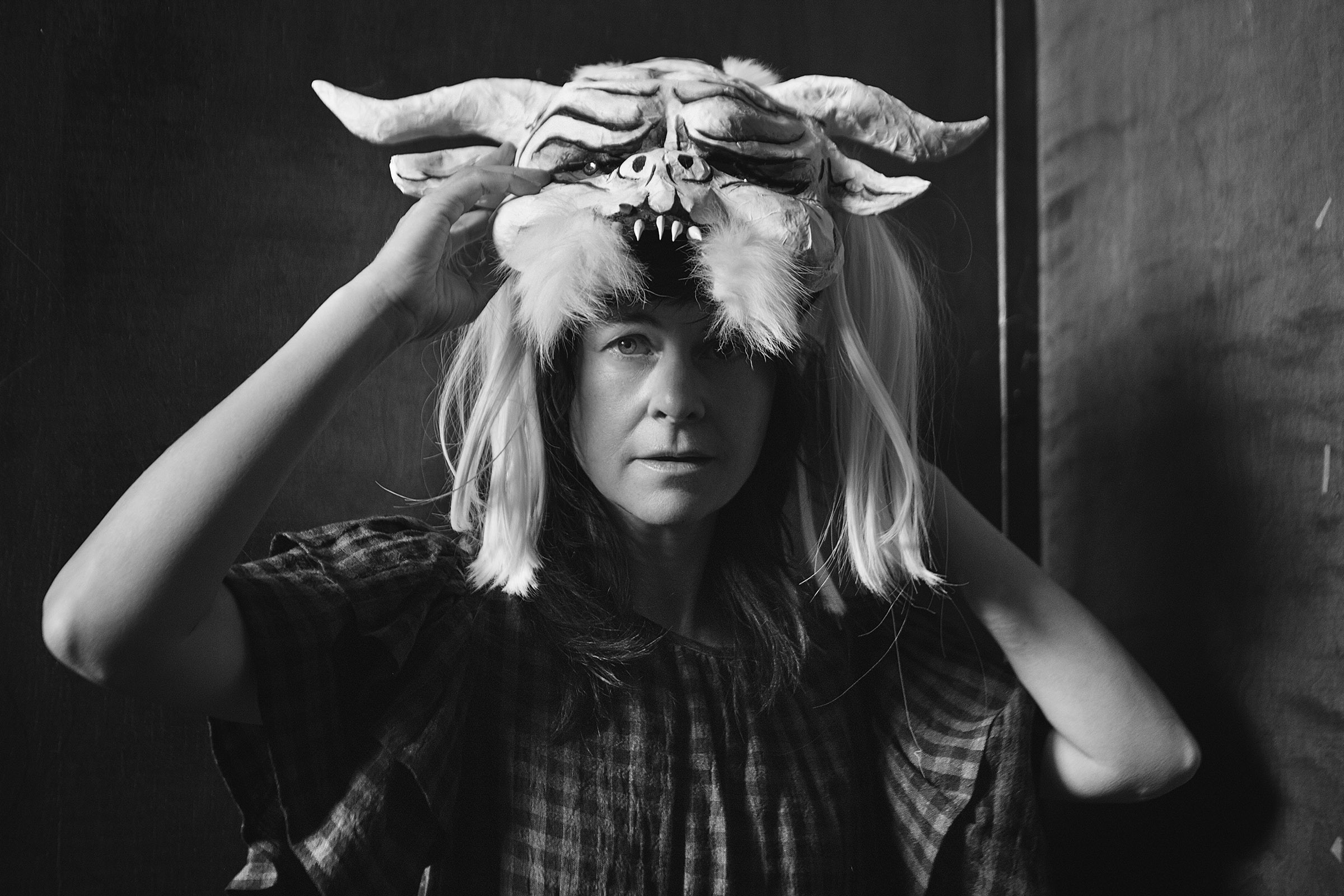
That Which We Do Not Remember, an exhibition by William Kentridge
21 Jan – 30 Nov 2022
One of the world’s most influential contemporary artists, an honest and painfully candid humanist whose exhibitions are coveted by the best galleries in the world, is bringing his art to Eastern Europe for the first time to open the most significant show of the Kaunas 2022 programme. This is a hugely important event for both Kaunas and the artist himself, as William Kentridge will be visiting the city of his ancestors.
Kentridge grew up in Johannesburg, South Africa, a city marked by the contrasts of both beautiful natural beauty and an industrial landscape. He began creating art during the apartheid regime, so his works are infused with a keen sense of place and complex subjects: human rights, racial and economic inequality, revolution, the confounding confrontation between noble ideals and the shameful aspects of everyday life that undermine human dignity.
The exhibition at the National M. K. Čiurlionis Museum of Art, That Which We Do Not Remember, will compel you to forget stereotypes. In this exhibition, Kentridge addresses humanity’s selective memory. The rejection of facts, history, and memories as a means of self-preservation or a propaganda tool is just as common a characteristic among people in Johannesburg and Rome as it is in Kaunas, says Kentridge, and calls us to dialogue with ourselves.

The Learning Garden of Freedom and Ex It by Yoko Ono
9 Sept – 4 Dec 2022
A music producer, a prominent figure on the New York art scene, and the wife of John Lennon, one of the founders of the legendary rock band The Beatles, Yoko Ono once collaborated with George Maciunas in the early days of the Fluxus movement. In 2022, her art will be visiting the native city of her friend.
The Learning Garden of Freedom is a retrospective exhibition of Yoko Ono’s work. It results from a collaboration between the artist’s Studio One in New York and the Kaunas Picture Gallery. The show will feature numerous works by Yoko Ono spanning different creative periods and practices: from conceptual art and experimental film to spatial installations, objects, word pieces, and performance art.
The exhibition will take place in Kaunas Picture Gallery and Emmanuel Levinas Centre. Additionally, Yoko Ono’s famous installation, Ex It, will be exhibited in the building of the Bank of Lithuania from 22 Jan to 11 Sept.

Memory of Being, an exhibition by Marina Abramović
Mar – July 2022
One of the programme’s most significant events will be Memory of Being, a solo exhibition by Marina Abramović, one of the world’s most renowned artists, in Kaunas Picture Gallery. The show is based on Abramović’s series The Cleaner, which began at the Moderna Museet in Stockholm in 2017.
The exhibition provides a detailed presentation of the most important stages of Marina’s work since the 1960s. It will feature video documentations of her interviews and most famous works, as well as the artist’s best-known video installations.
This impressive project was made possible through the partnership of Meno Parkas Gallery with the Centre for Contemporary Art Znaki Czasu in Toruń. A lecture by the artist is planned for Spring 2022.
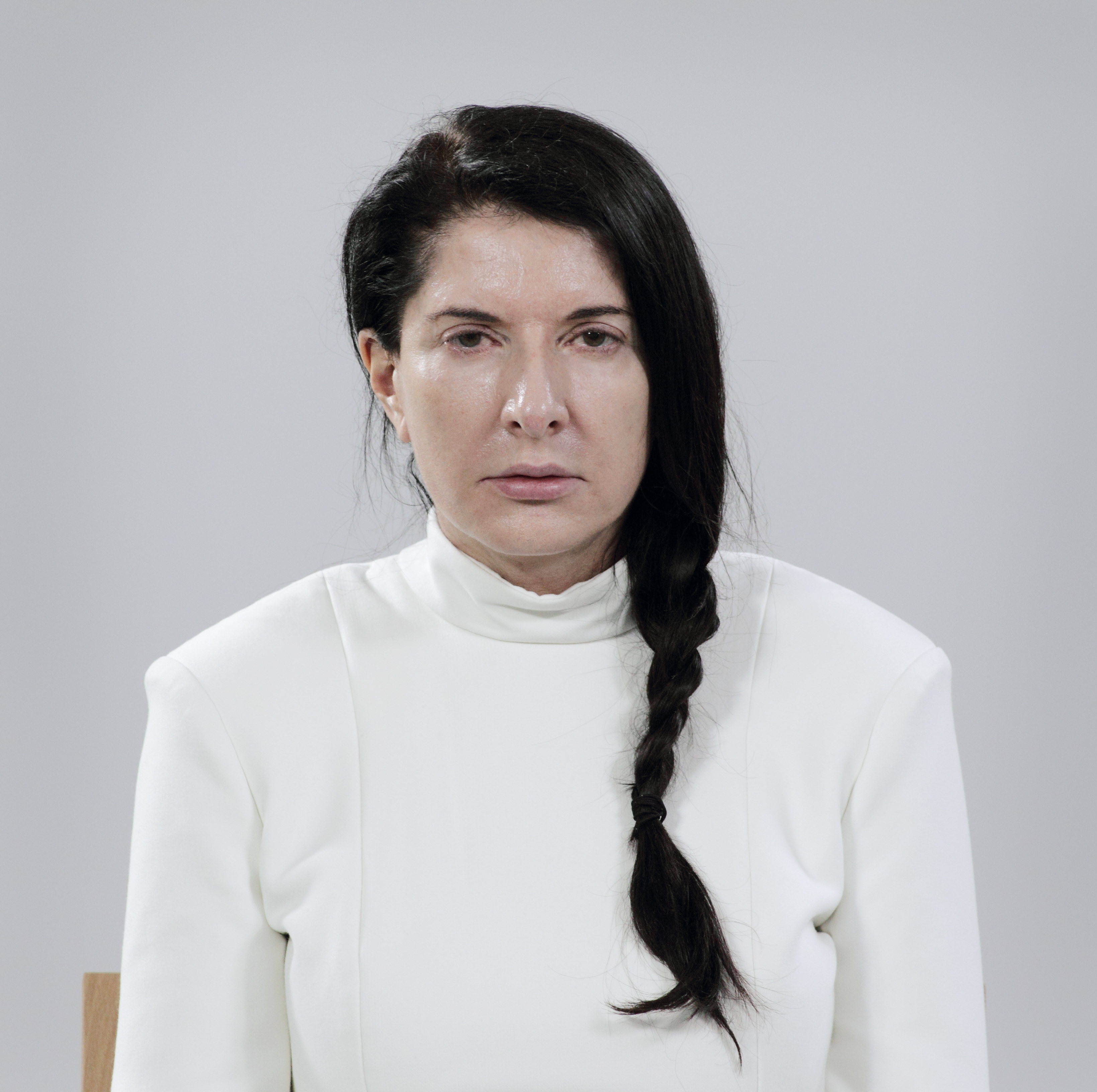
Kaunas-Vilnius: Moving Mountains, an exhibition
Apr – Aug 2022
How and why do (or don’t) Kaunas and Vilnius get along? This question will be explored by exhibitions held at MO Museum in Vilnius and the Kaunas City Museum. You’ll see how these two cities have depended on and shaped one another and how contemporary Lithuania has emerged from the tension between them.
The different sections of this exhibition compiled of artworks and various artifacts are symbolically based on four hills: Gediminas, Žaliakalnis (Green Hill), Boufalas, and Pelėdų (Owls). Located on the latter, Temporary M. K. Čiurlionis Art Gallery is the show’s location in Kaunas.
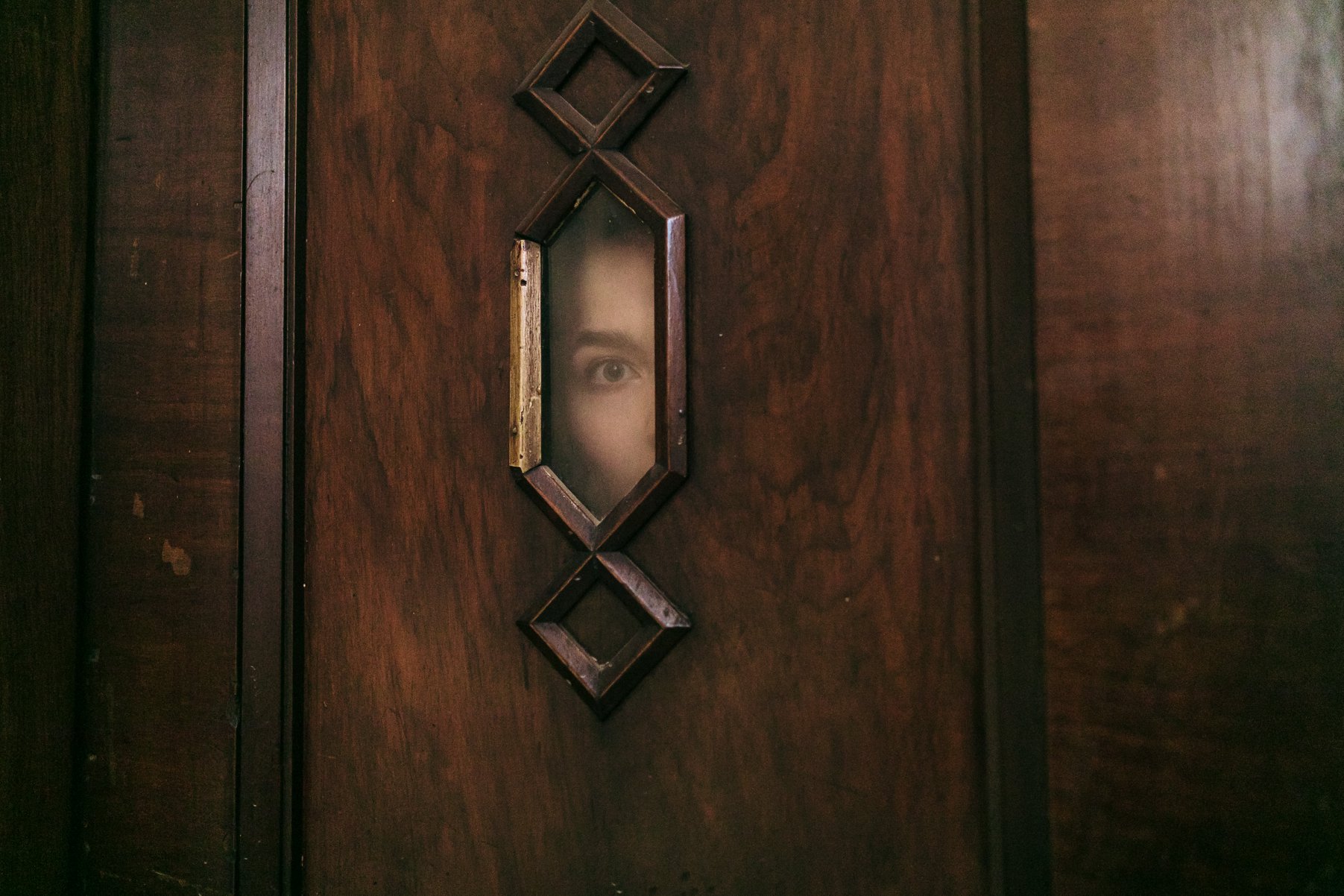
Modernism for the Future 360/365, an international exhibition
22 Jan – 10 Apr 2022
To be launched on the opening weekend of Kaunas 2022, this exhibition is an extraordinary report about the Modernism for the Future Programme. Over twenty artists from five countries will spread their relationship with architectural heritage at the iconic Kaunas Central Post Office.
One of the exhibition’s goals is to encourage current residents and owners of modernist buildings to treasure their property and motivate the city to take pride in this legacy and present it to visitors and tourists. With this exhibition, Kaunas takes the lead in the modernism preservation movement and finally establishes itself as a centre of world research, promotion, and attraction of modernism in the world. The significance of Kaunas as a centre of global modernism will be one of the most important and enduring achievements long after the European Capital of Culture project comes to a close.

1972: Breaking Through the Wall, an exhibition
12 May – 31 Aug 2022
Through this exhibition at the Kaunas Central Post Office, Kaunas will engage in a candid conversation with itself like never before. The highly visual show will transport audiences to the 1960s and 1970s and the communities of disobedient people who resisted the system: illegal rock music bands, Kaunas actors and pantomime performers, rebellious hippies, and modern artists from Kaunas and Vilnius.
Paintings, photographs, and films, documentary testimonials of the city’s musical life, youth fashion from the period, and other artefacts will tell the story about an alternative culture and a non-Soviet lifestyle led in Soviet Lithuania. Attendees will explore how aesthetic tastes and ethical attitudes in the Soviet period shaped other models of daily life and an atmosphere of disobedience toward the government.
Out of Darkness, an exhibition by Jenny Kagan
Aug – Oct 2022
The exhibition was first held in Great Britain. Now, the artist remounted it especially for Kaunas because that’s where its story unfolded.
“They met in the ghetto in 1943. She was only 18 years old. It is a story of oppression and persecution, unimaginable loss and terror, and yet ultimately it is also a story of love and a story of survival,” says Kagan. “While those around them perished, they escaped the ghetto and survived the war in hiding, with the help of their Lithuanian saviours. You are invited to navigate your journey through an atmosphere laden landscape, where faces float in the darkness, suitcases open to reveal magical interiors, hidden corners invite you in, and stories unfold.”
In a building on Gimnazijos St, Jenny Kagan (GB) will revive her parents’ stories about their experiences in Kaunas during the Holocaust. The setting of this exhibition, created through images, music, projections, and other elements, draws viewers into a very personal and, at the same time, universal story, inviting them to explore their emotions and experiences in the presence of memory, light, and darkness.

Flowing Connections / Power of Water, an exhibition by Ostrale Bienalle
5 Oct – 13 Nov 20222
Since 2016, the Ostrale Bienalle has organized travelling exhibitions to present the interdisciplinary content of its shows in various parts of Europe, collaborating with other cities that have served as European Capitals of Culture, including Pécs 2010 (Hungary), Wrocław 2016 (Poland), Valletta 2018 (Malta) and Rijeka 2020 (Croatia).
In 2022, the travelling exhibition will take place in the Kaunas Central Post Office and Zapyškis, a town in Kaunas District. The show will present impressive artistic works selected and exhibited at the Ostrale Bienalle O21 in Dresden in 2021.
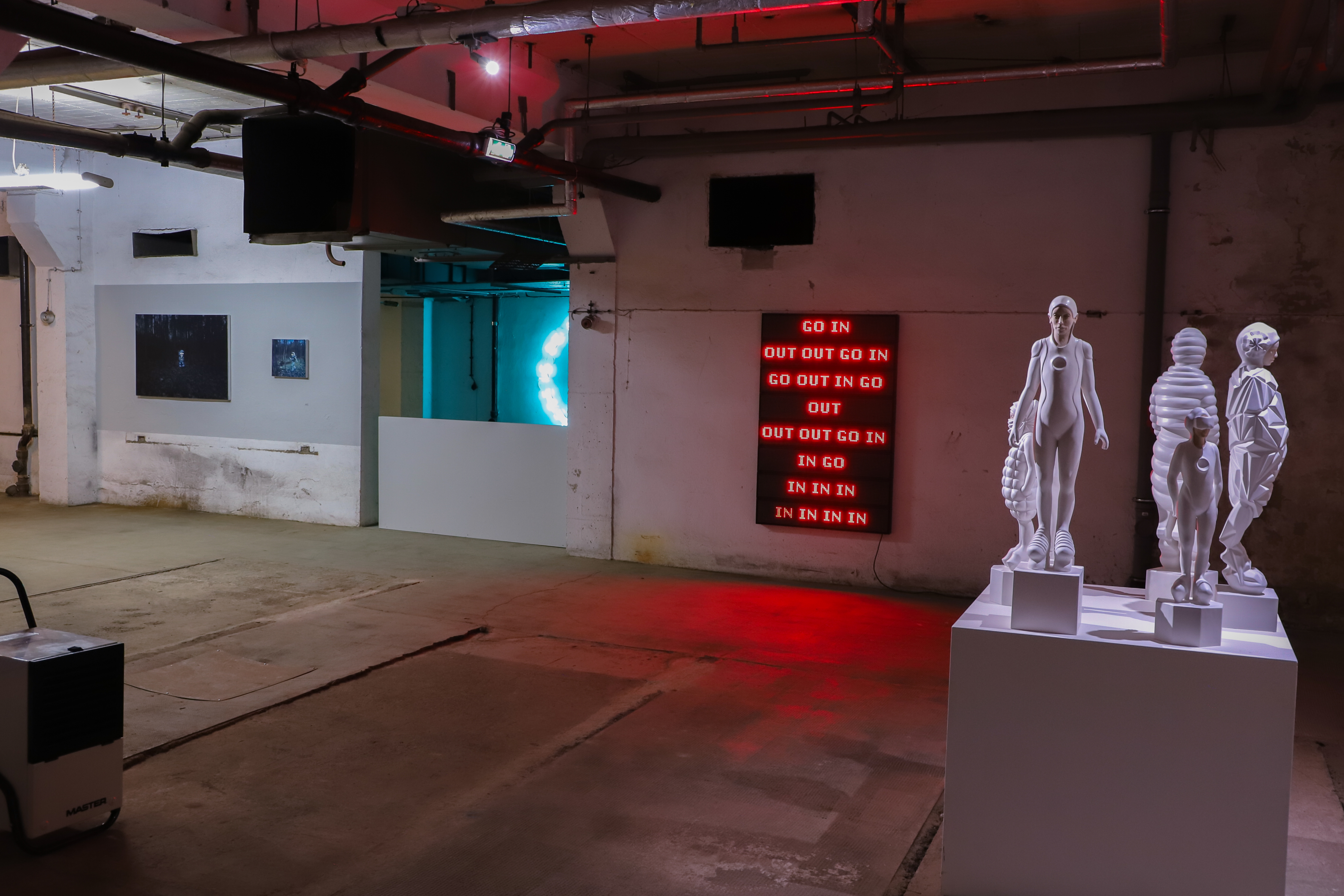
Porcelain City, International Bone China Symposium
Oct 2022
Yet another exciting event at the Kaunas Central Post Office will present a fragile part of Kaunas history associated with the Jiesia porcelain factory. The bone china exhibition and an international symposium will highlight the traditions and innovations of Kaunas porcelain art and design. The gathering will feature surviving individual and serial ceramic pieces and original designs assembled from the Jiesia ceramics factory. An exhibition held during the symposium will invite guests to explore the porcelain production process, meet artists and designers, and appreciate the fragility of porcelain by experiencing a personal connection with these works of art.
East-East, Kaunas Architecture Festival
2 Sept – 22 Oct 2022
The 2022 Kaunas Architecture Festival programme welcomes back an international architectural project aimed at professionals and the broader public, attracting leading architects from Lithuania and Japan and students from different architecture schools. East-East is an ongoing collaborative project to help lay the foundation for and develop previously non-existent exchanges and cooperation between Lithuanian and Japanese architecture. It will be kicked off by a forum at the Žalgirio Arena and will then continue at the Kaunas Central Post Office and other locations, with exhibitions, lectures by professionals, and student competitions in the field of architecture between the Lithuanian and Japanese architecture communities.

Ultrasocial Pop, an interdisciplinary exhibition by Filip Markiewicz
25 Nov – 31 Dec 2022
The Polish-Luxembourg artist Filip Markiewicz developed the award-winning exhibition over many years. Ultrasocial Pop intertwines the artist’s paintings, drawings, video projections, performance, and his musical project, Raftside. It seeks to show the backstage of this reality and thereby create a new form of dada surrealistic pop language that tries to understand the current evolution of European society.
Markiewicz’s works have been presented at the Venice Biennale, the Louvre Museum, the Centre for Contemporary Art Derry-Londonderry, the National Museum of Contemporary Art in Bucharest, the Theatre Basel, and other well-known European art institutions.
You’ll also have the chance to view exhibitions by world-class artists Martine Feipel ir Jeano Bechameilio (Luxembourg) at the Meno Parkas Gallery in 2022.
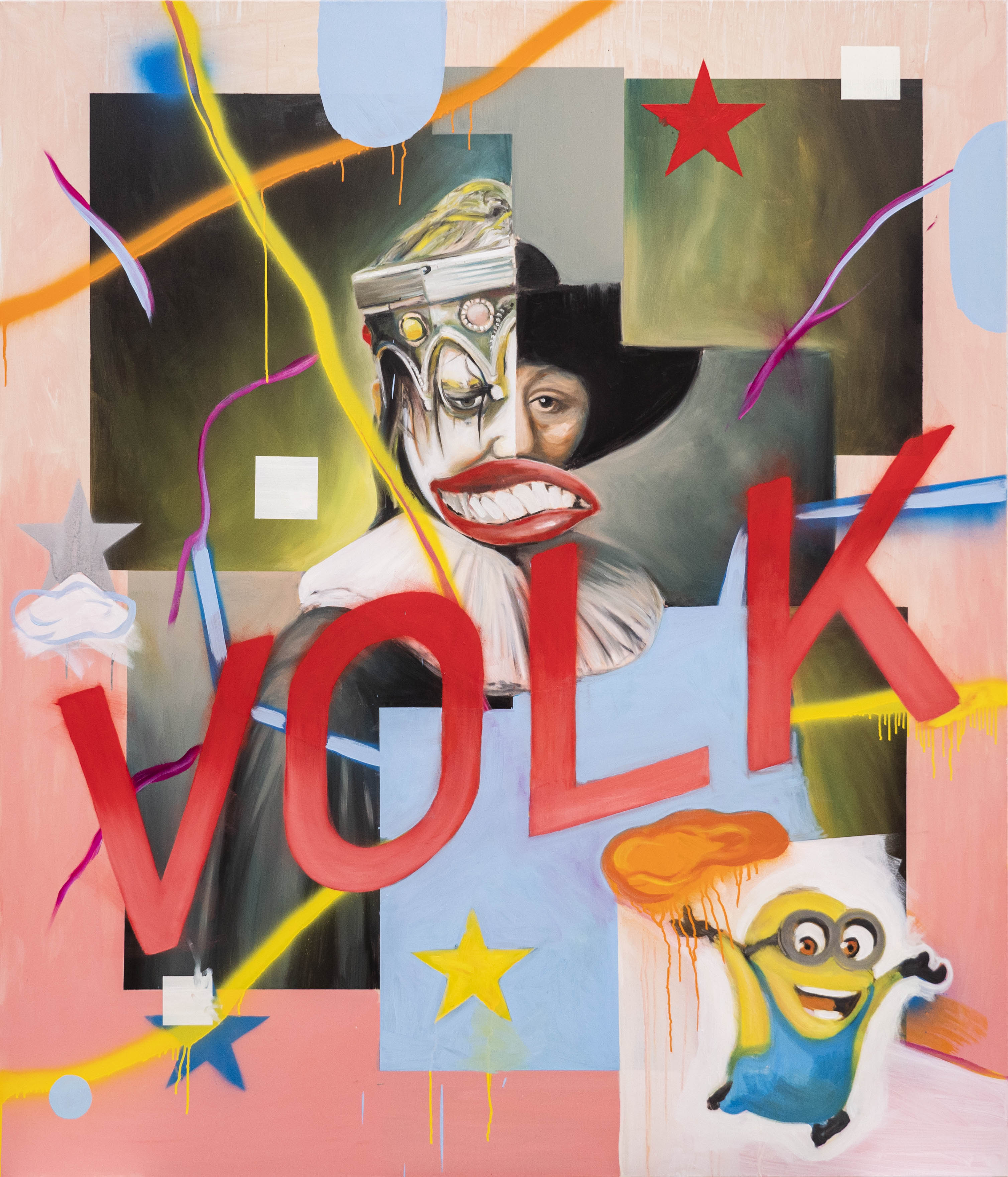
Working Class Heroes, an exhibition
27 Oct 2022 – 23 Feb 2023
The Luxembourg city of Esch-sur-Alzette will also share the title of European Capital of Culture in 2022. Esch may be far from Kaunas, but both cities inherited physical and spiritual industrial ruins from their not so distant past.
The Kaunas Picture Gallery presents an exhibition by MUAR/Museum of Labour History in Luxembourg. The interactive show reveals the daily life and labours of the southern industrial region of Luxembourg – its hopes and dreams and the tense struggle for workers’ rights.
MUAR/Museum of Labour History was established in Tétange, a factory that once made shoes for coal miners. The museum seeks to focus attention on subjects relevant to the world of work. The museum’s abbreviation, MUAR, means tomorrow. Thus, the ideas explored here are not limited to the industrial past but are also firmly connected to the present and the future.
The Family of Man, a photography exhibition
24 Nov – 31 Dec 2022
It is perhaps the longest touring exhibition in the world – a legend that has enchanted New York, Paris, Milan, London, Zurich. It is coming to Kaunas Photography Gallery in the final month of 2022.
The extensive presentation of humanistic photography includes works by 273 photographers from 68 countries. The collection of images was first curated in 1955 by Edward Steichen for the Museum of Modern Art (MOMA) in New York City. Since 1994, the exhibition has been on permanent display at Clervaux Castle in Luxembourg.
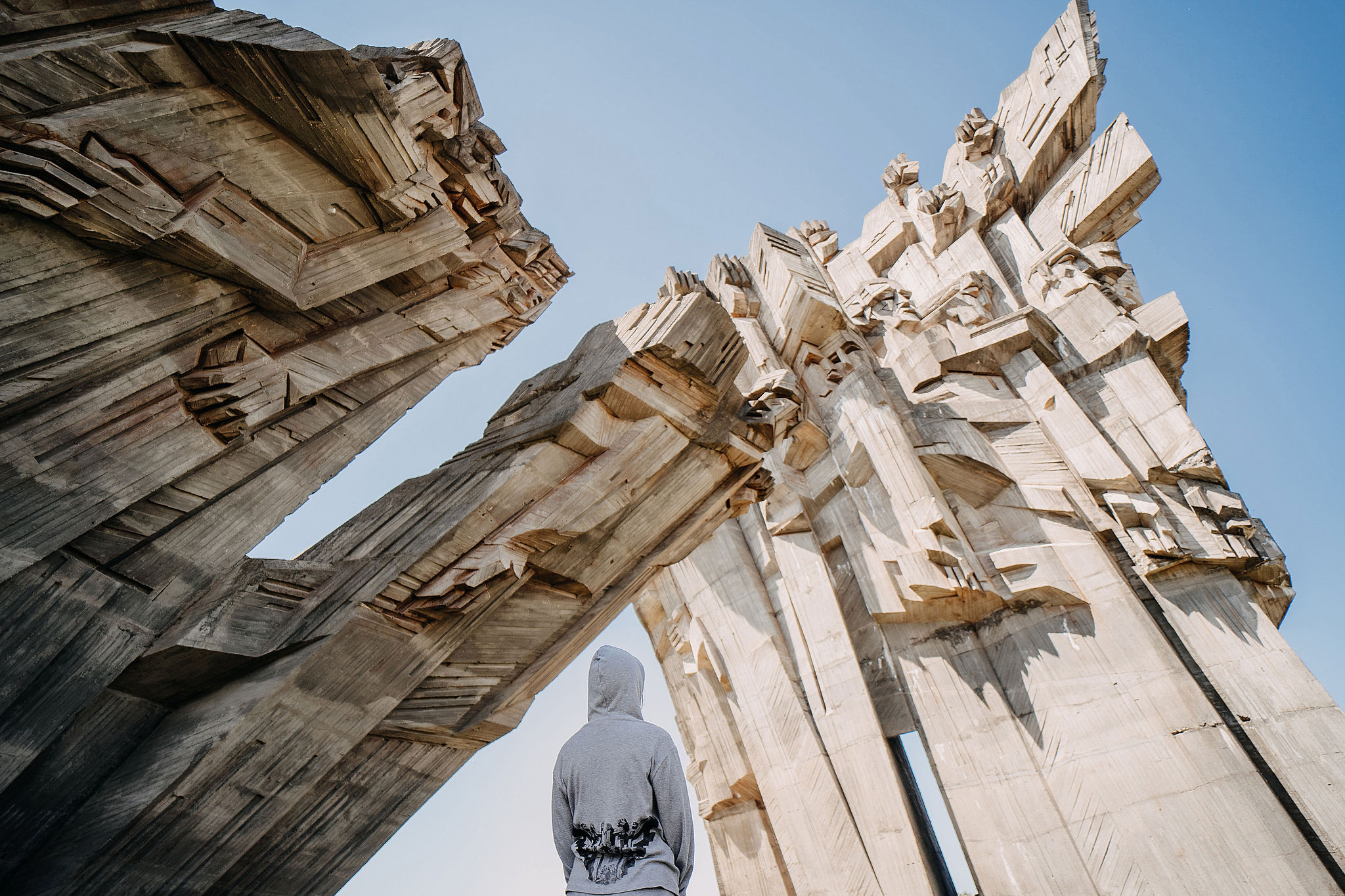
In 2022, culture will be inescapable. From cosy rendezvous under verdant trees to massive spine-tingling events, from installations to world-class performances, from theatrical tours to design workshops. Kaunas 2022 encompasses over 1000 events! More than 40 festivals, 60 exhibitions, 250 performing arts events (of which more than 50 are premieres), and over 250 concerts are planned to take place in 2022.
Full programme
800 Artists and Performers in 50 Locations for the Official Opening of Kaunas 2022
In Kaunas, on January 19-23, 2022, culture will be inescapable. The city and the district surrounding it will officially become the European Capital of Culture. The opening weekend events, culminating with Act I of the Trilogy of the Contemporary Myth of Kaunas, will turn the city into one big European stage and set everyone’s mood for the year-long cultural marathon.

So far, no city has tried to change the course of its life by creating a new myth. The Beast is a metaphor, a cultural allegory that raises questions about the Beast in the city and inside its residents. Three main events of the European Capital of Culture, the Trilogy of the Contemporary Myth of Kaunas, are the Confusion, revelation and contract with it. Act I of the trilogy, called The Confusion, will highlight the first weekend of Kaunas 2022.
‘The Confusion’s formula includes 30 different performances spanning 50 locations in Kaunas and Kaunas district – and 800 artists and performers from Lithuania and abroad,’ Aistis Lansbergas, Technical Producer of Kaunas 2022, presents one of the most ambitious events in his career.
The Confuison will start in Kaunas District on January 19 and move towards the centre of Kaunas in light circles. The act will reach its peak at 7:30 pm, January 22, 2022. During the weekend surrounding the big moment, between January 19 and 23, more than 100 events, including premieres, exhibitions, concerts and spectacles, will take place, all connected through the new myth of Kaunas and the Confusion of the Beast.
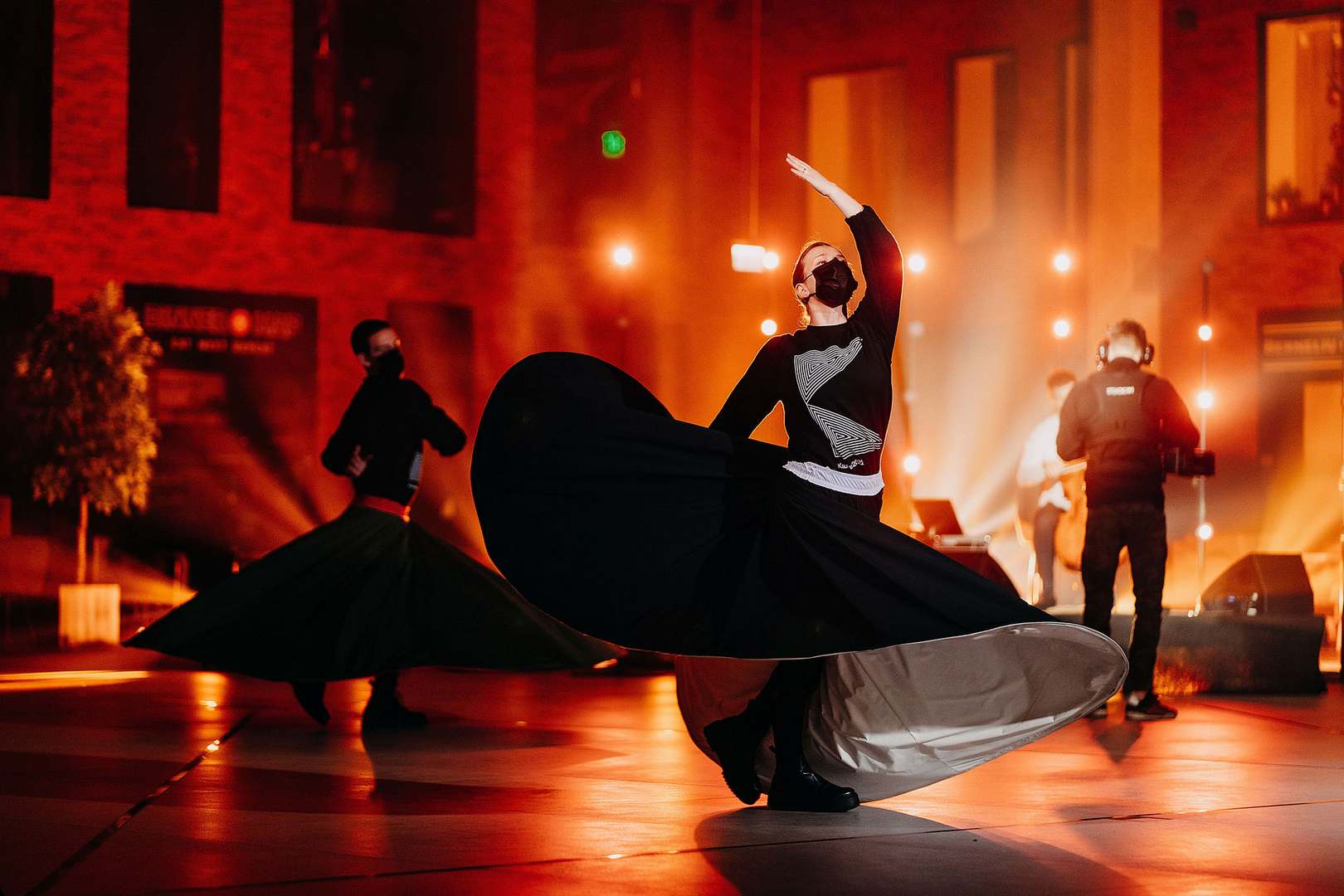
‘The after-show events in the city of Kaunas are all ‘incorporated’ into a city game – we will invite the audience to play with us and look for traces of the Beast of Kaunas. I think this is like no other ECoC opening, where a city game structure is used to introduce audiences and citizens to the events and themes coming up during 2022,’ says Chris Baldwin, the director of the grand trilogy of Kaunas 2022.
‘The event will clearly be unique in so far as we have planned, designed and rehearsed the event during a pandemic which has not allowed us to see one another very much, and where we were completely unsure of the restrictions which would be in place in January 2022. We are very proud and excited to have created an event that is multi-layered and almost pandemic-proof! In other words, the main show could happen even if we face (hopefully not) very stringent controls regarding public congregations. It is contemporary, digital, yet live, international and participatory, Designed as much for a mass live audience as for an international TV audience,’ reveals Baldwin.
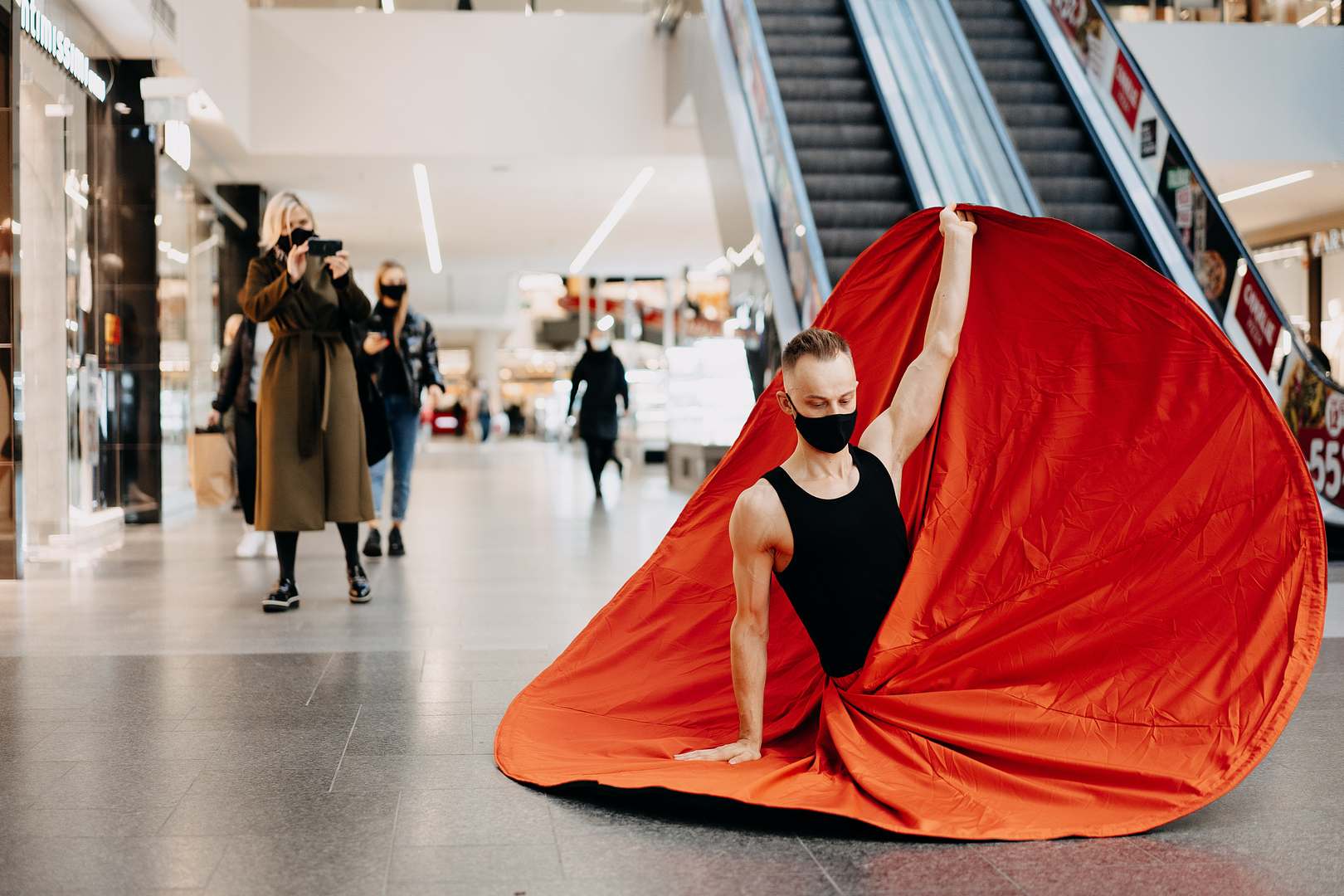
The rich program of the opening weekend has been tightly knit by the dense network of Kaunas 2022 partners. The list includes theatres, museums, galleries, communities and other artistic and cultural initiatives from Lithuania and abroad. Novi Sad and Esch, the other two European Capitals of Culture 2022, are also coming to say hi! Perfect planning, as numerous concerts, installations and exhibition openings will occur in Kaunas on the 4th weekend of January, including That Which We Do Not Remember by William Kentridge and Ex It by Yoko Ono. It is the very same weekend when all of the programmes of Kaunas 2022 will present their key themes and events for the whole year.
Kaunas and the surrounding Kaunas district are ready to become one big European stage next year, offering over 1000 events. More than 40 festivals, 60 exhibitions, 250 performing arts events (of which more than 50 are premieres), and over 250 concerts are planned to take place in 2022. All this is delivered by Kaunas 2022’s team of 500 people, alongside 80 local and 150 foreign partners. 140 cities in Lithuania and the world, 2,000 artists, 80 communities, and 1,000 great volunteers.
Full programme

Discover the Rich Mosaic of the History of Kaunas Jews in a new Book
Do you know which company in Kaunas manufactured radios called Tautofonas, or the Folk’s Radio, in the interwar period? As the press then stated, they were “no worse than foreign”, according to the media at the time! Have you heard that the popular tourist attraction in Kaunas, the Napoleon Hill, or the mound of Jiesia, once called the Jewish Mountain? And have you ever come across the fact that Herman Perelstein, the founder of the legendary boys’ choir Ąžuoliukas, once lived in one of the most beautiful houses in Kaunas on Vytautas Avenue?
These and hundreds more interesting historical facts, still covered with thick layers of memory paint in everyday life of Kaunas, are revealed in the new book “The Jews of Kaunas”. The publication was initiated by the Memory Office, one of the key programmes of the Kaunas – European Capital of Culture 2022 project, has been published in Lithuanian and English.
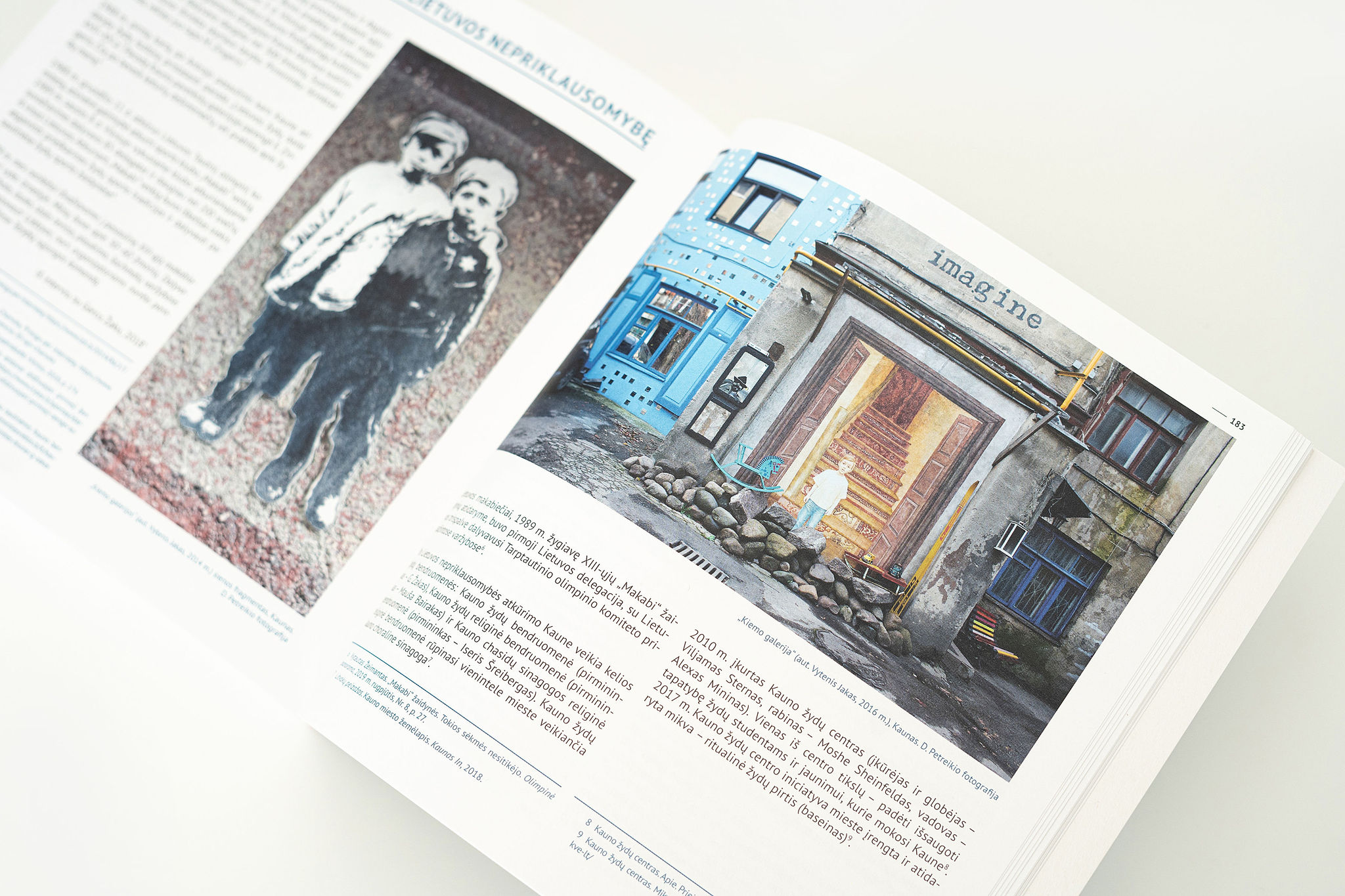
Like other projects organized by the Memory Office, including the CityTelling festival, the book attempts to understand the city’s complicated past, rekindle its multi-ethnic memory, and remember the names and accomplishments of the people of Kaunas and their contributions to its history. It is also an endeavour to include the history of the Jews of Kaunas as an inseparable part of the city’s overall history.
“I am positive that facts, dates and names are not enough to tell the story well. To genuinely understand how people lived 50 or 150 years ago, we need to comprehend how they thought, felt, and saw the world. That is why we have included numerous quotes and memories from historical sources. These inserts are witnesses to time, adding life, breath and colour to the big picture,” says Dr Daiva Citvarienė, curator of the Memory Office programme. She compiled “The Jews of Kaunas” together with the historian Arvydas Pakštalis.
While the Jewish history in Kaunas is more than 500 years old, the book is only a couple of hundred pages. “We remember the most important names of Kaunas residents who lived and worked here, their contribution to education, culture, medicine, industry, business and other areas of life; we also touch on the painful pages of history. I hope that the book will inspire further research,” stresses D. Citvarienė, who believes this story is just beginning to be written. According to the art critic, the book was warmly welcomed by the Kaunas Jewish community. There is also no doubt that it will become a relevant souvenir for the guests of the Capital of Culture who will attend the events of Kaunas 2022 next year, such as the World Litvak Congress.
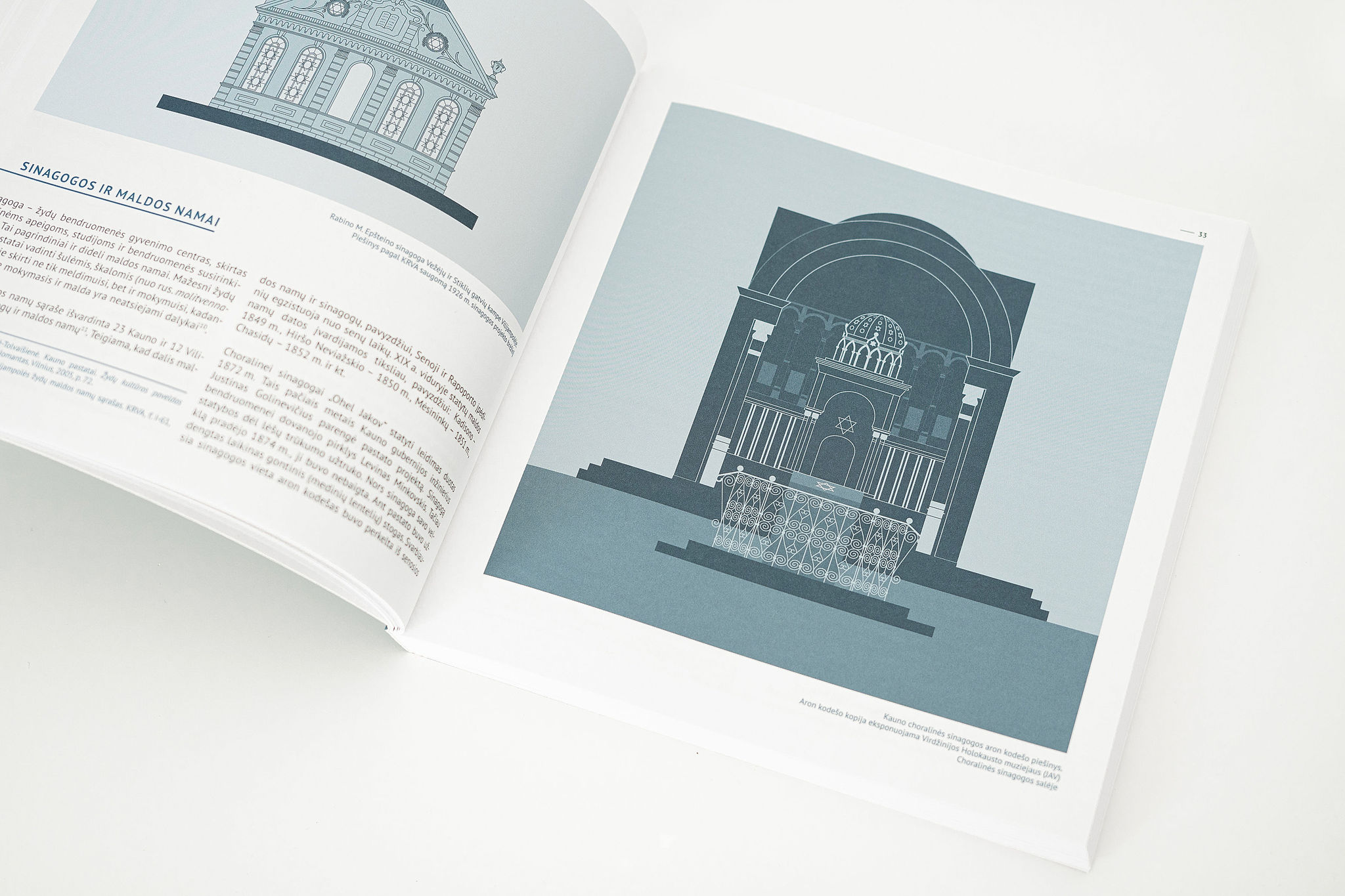
The selection of texts exploring various epochs and areas of life is generously illustrated by documents, photographs, and other archival material and unique illustrations. They were done by designer Darius Petreikis, the author of the mascot of the Kaunas 2022 project, the Beast of Kaunas.
“History can be interesting, and it can be presented in a playful manner. We’re speaking about a period of several hundred years about the community’s culture, traditions, and customs. We wanted to tell that story lightly, with a pinch of humour. After all, Jewish history is not just about the Holocaust. It’s so much more, it’s centuries of culture, traditions, customs,” D. Citvarienė invites everyone to open “The Jews of Kaunas”.
The book “The Jews of Kaunas”, published in Lithuanian and English, will be available at the Kaunas 2022 office (Laisvės Ave. 36, Kaunas) and the Kaunas IN Tourism Information Center located at Kaunas City Hall (Rotušės Sq. 15, Kaunas) in the nearest future.
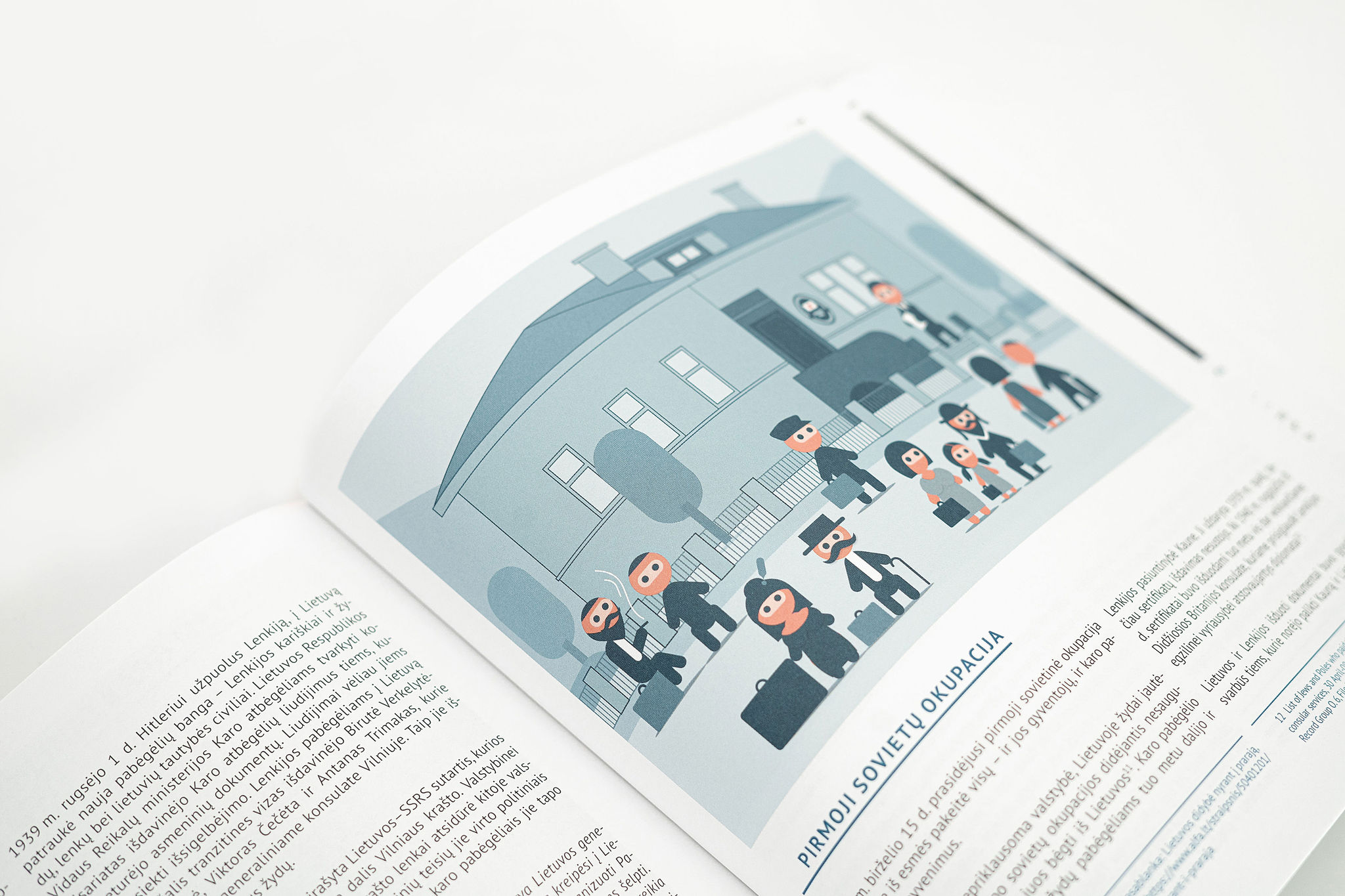
Exhibition: Architecture of optimism - The Kaunas phenomenon 1918-1940 / Unité d'Habitation Le Corbusier, Marseille
"Architecture of Optimism: the Kaunas Phenomenon, 1918-1940" will be on display at the "Kolektiv Cité Radieuse" Gallery, located within Le Corbusier's Unité d'Habitation in Marseille, from December 11, 2021 to January 9, 2022 and will start the European Capital of Culture year Kaunas 2022.
The city of Kaunas is renowned for its unique fusion of history and creativity through architecture and design.
The city's golden age between the two world wars was marked by modernist architecture that transformed Kaunas into a forward-looking European metropolis, reflecting the forward-looking optimism and hopes for cultural, social and technological innovation of the time.
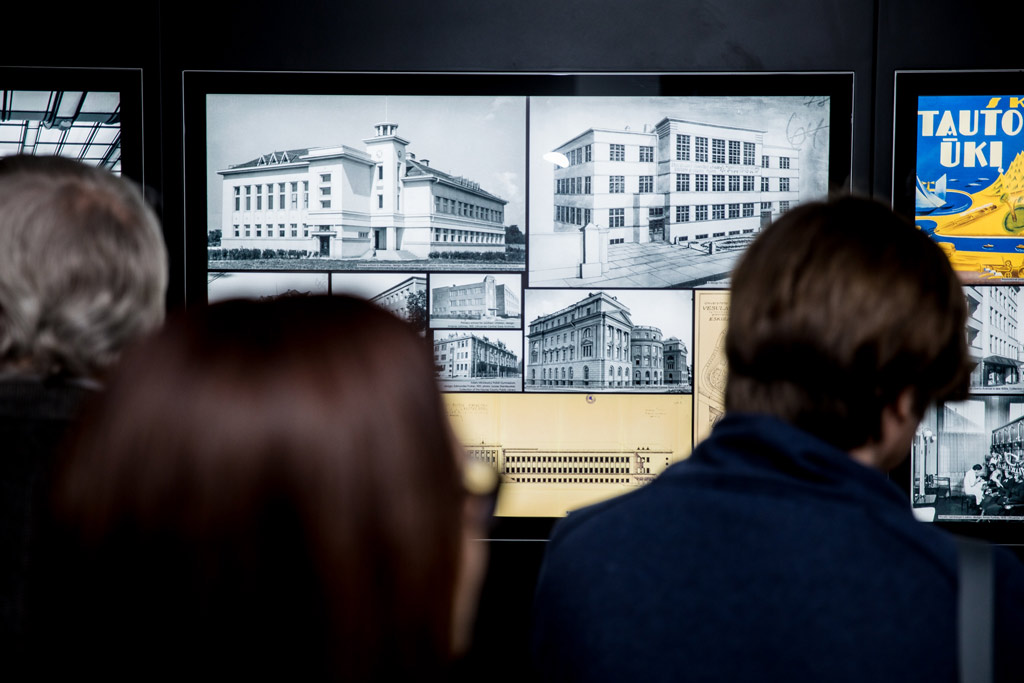
During this period, Kaunas changed its physical, historical and cultural identity considerably: in less than 20 years, its inhabitants built more than 12,000 new buildings, reshaping the whole city. This regeneration was the new heritage of Kaunas and the expression of its genius loci.
After the Second World War and during the Soviet occupation, Kaunas' interwar modernist architecture provided a vivid memory of the former state, a symbolic window to the West, and became an architectural reference for Soviet architects.
The exhibition celebrates the architectural history of the city but also rewards and revives the optimistic vision of this period by strengthening the cultural life, community building and physical and social innovation of Kaunas.
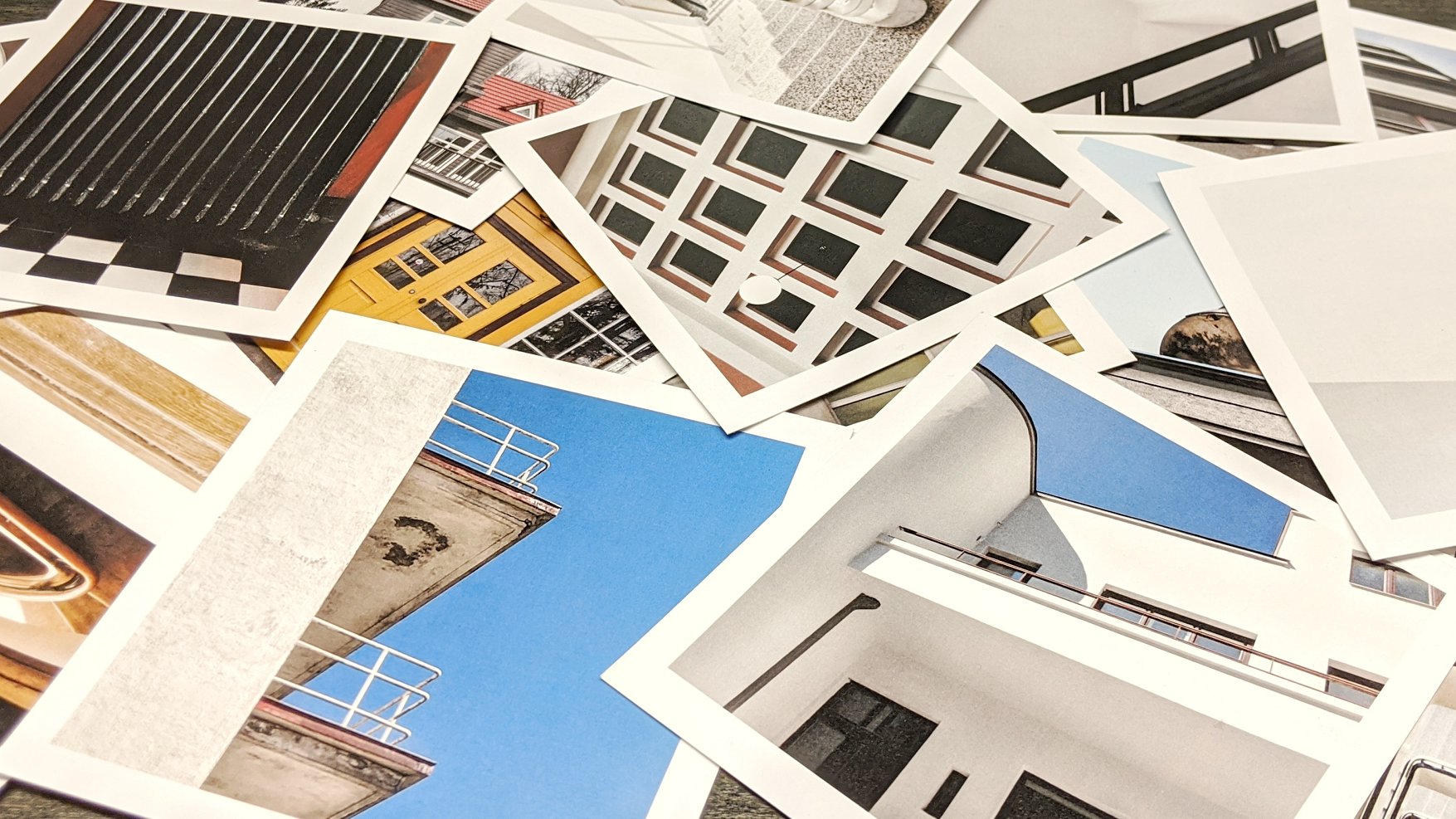
Address :
Galerie Kolektiv Cité Radieuse - Unité d'Habitation Le Corbusier
280 Bvd Michelet, 3rd floor no.313, 13000 Marseille
Tel : 0624686670
Timetable : Wed-Sat : 10h00-18h00 / 11 December 2021 - 9 January 2022
Curator : Marija Dremaite with Vaidas Petrulis, Giedre Jamkeviciute and Matas Siupsinskas
Coordinator: Vaiva Marija Bružaitė
kaunas2022.eu | www.modernizmasateiciai.lt
Estonian art and tech farm Maajaam announces an international open call for the technological art exhibition Wild Bits
Estonian technology and art farm Maajaam announces an open call for artists to participate in the residency Wild Bits that will culminate with an outdoor exhibition in the surrounding hill country of Otepää, South Estonia. Wild Bits is part of the main programme of the European Capital of Culture Tartu 2024.
Art projects are expected to be produced during the 3-week residency period in the summer of 2022 and exhibited in the natural landscape around Maajaam. This is the first open call to find works for the Wild Bits exhibition programme taking place from 2022 to 2025. The created works will remain there in Maajaam to be exhibited at the main exhibition of Wild Bits in the summer of 2024 as well as in satellite exhibitions in Estonia, Latvia and Lithuania until 2025. One artist will be selected from Lithuania as the residency is co-funded by Kaunas 2022 European Capital of Culture. The collaborator from Lithuania will be the landscape design festival Magenta, official partner of Kaunas 2022. The Magenta festival will present 3 of the selected works to Lithuanian audiences in September 2022.
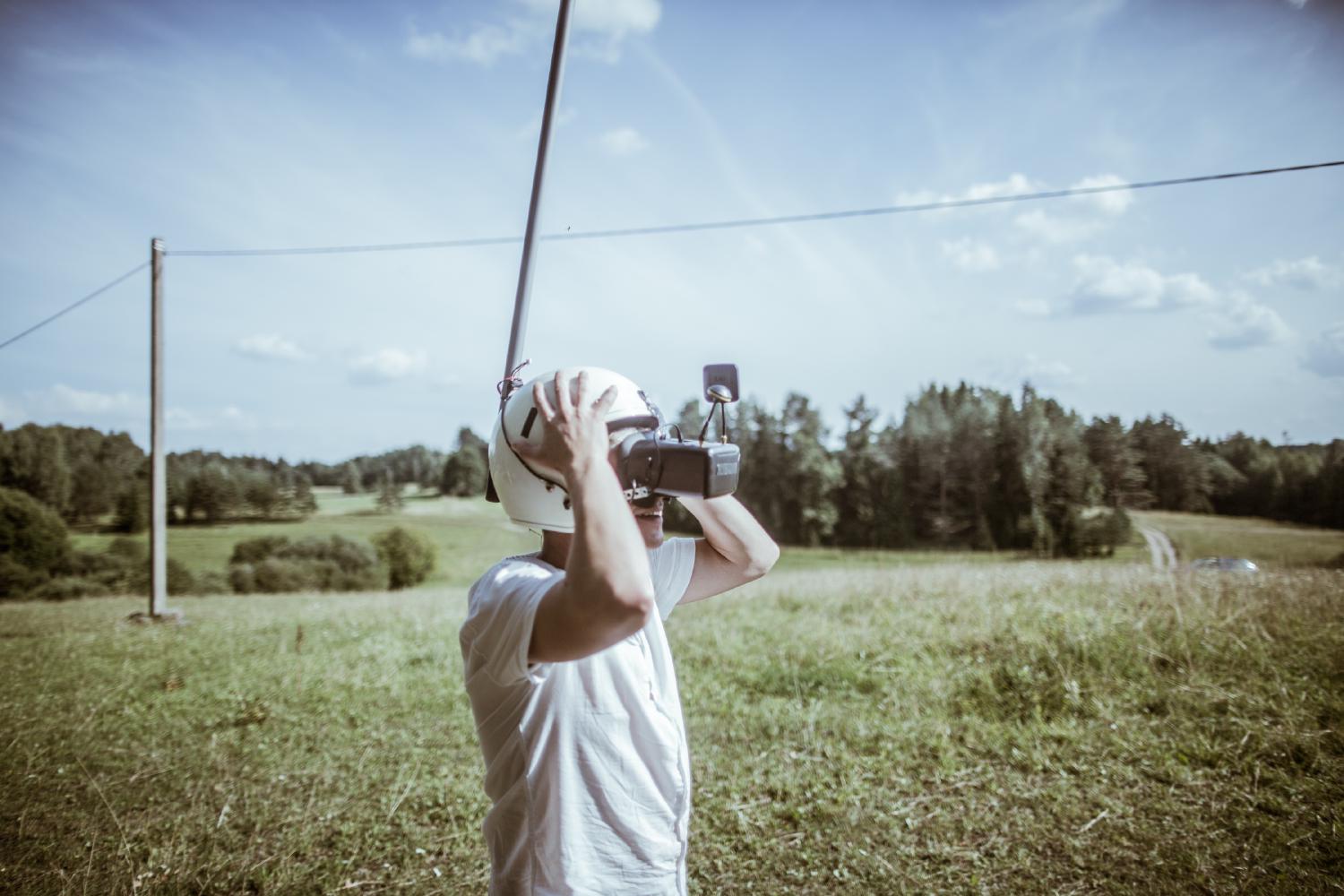 Maajaam is looking for art projects that explore the human condition in a contemporary technological society and look at points of contact between people, technology and nature. The artworks should fit into the diverse landscape, which includes areas of forest, meadow and swamp and bodies of water - a creek and a lake. The artworks should withstand outdoor conditions. Both Estonian and foreign artists from various disciplines are welcome to participate.
Maajaam is looking for art projects that explore the human condition in a contemporary technological society and look at points of contact between people, technology and nature. The artworks should fit into the diverse landscape, which includes areas of forest, meadow and swamp and bodies of water - a creek and a lake. The artworks should withstand outdoor conditions. Both Estonian and foreign artists from various disciplines are welcome to participate.
“Maajaam invites us to dream, research, invent and create new possibilities for people to positively survive the seemingly gloomy future ahead”, says artist Timo Toots.
Projects are selected by the panel that includes the artists operating Maajaam
Timo Toots and Mari-Liis Rebane, artist Taavi Suisalu, the organisers of the site specific urban festival UIT Kadri Lind and Marie Kliiman. This year's guest panel member is Gediminas Banaitis-Skrandis from Kaunas 2022. Three to five projects will be selected for the residency of 2022. Selected projects will receive an artist fee of €2000, and the production budget is up to €5000. Transport and accommodation for participants will be covered to the extent agreed upon. Wild Bits residency and exhibition programme is co-financed by Tartu 2024 - European Capital of Culture. The satellite exhibition in Kaunas in 2022 is supported by the Estonian Cultural Endowment and Kaunas 2022 - European Capital of Culture.
Submissions are accepted until December 12, 2021 and selected projects will be announced in January 2022.
For more information on applying and participating - click on this link
MAAJAAM
The small art center called Maajaam (Earth Station in Estonian) is situated in Otepää nature reserve in South of Estonia in an old farm. The buildings previously used for agriculture have been converted to host a high-tech art studio and residency house for artists. Maajaam is run by artists Timo Toots and Mari-Liis Rebane.
www.maajaam.ee
Exceptional achievements of Kaunas modernist architecture and design reached Bilbao Design Week
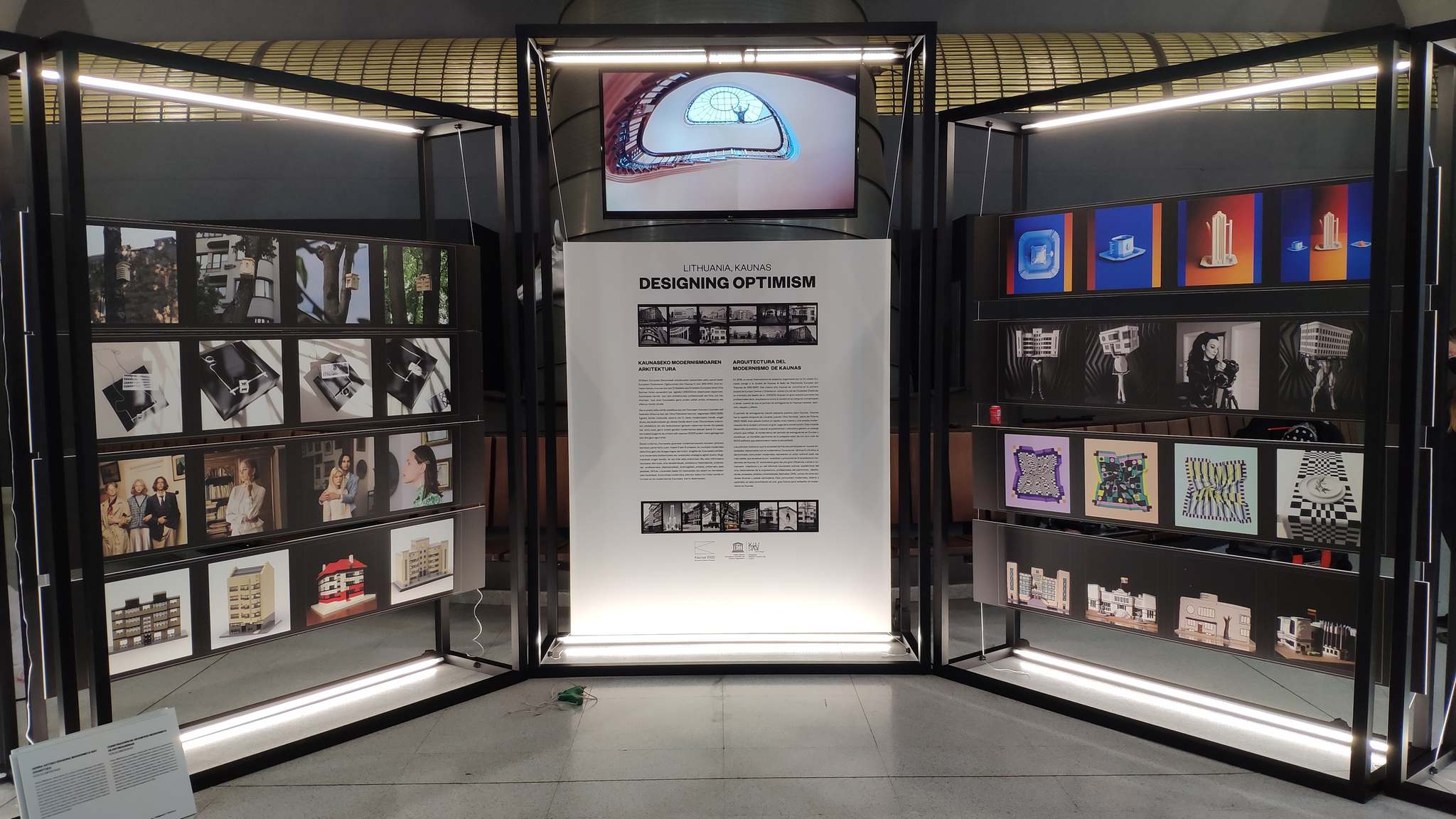
With the rapid approach of 2022 - the year of the European Capital of Culture, Kaunas is increasingly representing itself on international city platforms. The artists of Kaunas travel thousands of kilometers to show off their work. Currently, Bilbao Bizkaia Design Week takes place on November 18-25, where you can get acquainted with the creators of Kaunas and the activities of Kaunas 2022.
Bilbao Design Week is an annual event that aims to promote the creative industries sector through conferences, lectures, workshops, presentations, and meetings in various parts of the city and involves multiple cultural institutions, associations, universities and creators, and artists. This year's theme, Crossings & Transitions, examines the current period, with a particular focus on climate change, socio-economic and health crises, aging of the population, technological progress, and digital transformations that are pushing the world into new everyday perspectives, sustainability, accessibility, and creativity.
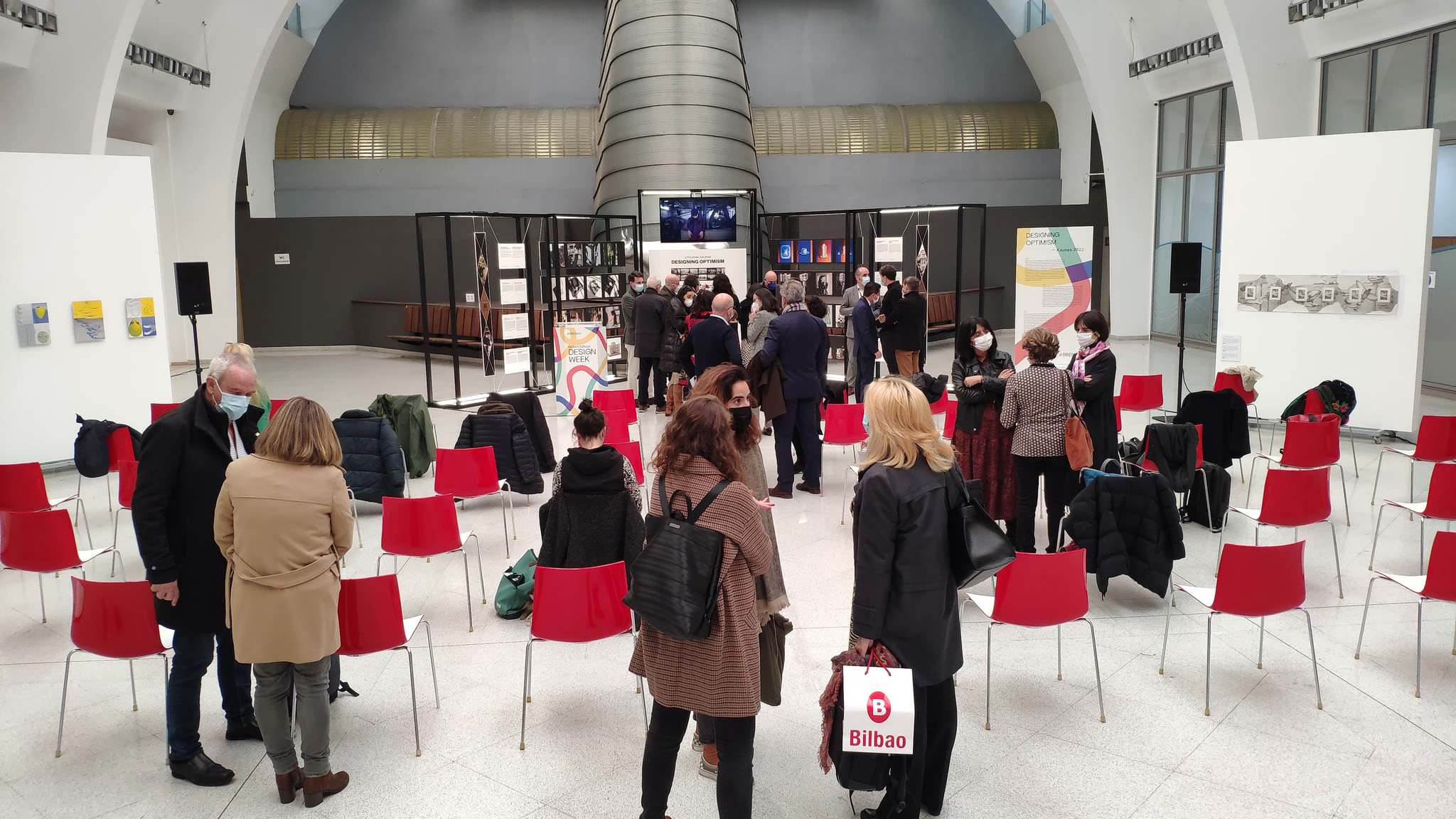
During the Design Week, it will also be possible to get acquainted with the plans and achievements of Kaunas - the European Capital of Culture, the identity revealed through interpretations of design and architecture, and hear the presentations of Gintaras Balčytis and Gerda Liudvinavičiūtė, as well as learn their sources of creativity and inspiration. Furthermore, modern architecture and design peculiarities were on display at the Guggenheim Museum and contemporary art and leisure center Azkuna Zentroa.
Creators and culture lovers from all over Europe are interested in Kaunas' activities and topics, so Bilbao's Design Week also includes an exhibition "Designing Optimism" created by Gediminas Banaitis, which features Modernism for the Future projects and interpretations of modernism architecture revealed by Timtiejus Norvila - Morfai, Gerda Liudvinavičiūtė[Celsius273], youth project Komoda, Mantas Kuginis, director of the film "Pleads" Aideen Barry, Studio Falbanka, Kaunas Food Industry, and Trade Training Center project portraying modernist buildings in cakes, Rokas Mikšiūnas and a joint project by LRT and Lithuanian dance information center "Contemporary art and architecture. "

Since 2015, Kaunas has been participating in the initiatives of the UNESCO Creative Cities Network and sharing contemporary culture with the world. By joining the Network, cities reaffirm their commitment to sharing best practices, developing partnerships that foster creativity and the design industry, and strengthening participation in cultural life. In recent years, Kaunas has participated in many international initiatives that promote the recognition of the importance of design in the city, and participation in the activities of the UNESCO Network of Creative Cities has become more active.
